Hội An is not only a great destination for digital nomads, but it is also excellent for vegans. It has many vegan restaurants and offers several vegan cooking classes. For a small town, this is quite impressive!
We took two vegan cooking classes in Hội An, one with Rau Ơi Eatery and the other with Chickpea Eatery. Each class was unique and amazing in its own way.
Here we will share our experience with the class at Rau Ơi Eatery, which you can book through their website. The class costs 900,000 VND and runs from 8:30am to 1:30pm (though in actuality it went until around 3:00pm when we did it).
Chef Vang, a skilled and friendly chef, leads the class. Her mission is to promote vegan cuisine in Vietnam. She aims to keep authentic Vietnamese flavors and traditions alive while veganizing them.
In the course, we made four dishes, all completely vegan:
- Saigon-style fresh spring rolls
- Hội An vegan chicken rice
- Banana blossom salad
- Phở, Vietnamese rice noodle soup
We took the class with some friends from Hub Hoi An, our coworking space. There were also some other travelers we met there. All of us left with happy stomachs.
Tra Que Vegetable Village
We kicked off our farm-to-table cooking class with a journey to Trà Quế Vegetable Village, a verdant oasis brimming with organic goodness.
A wonderfully green and lush patch of the countryside, the village is a second home to many Vietnamese families who farm herbs, leafy greens, and various veggies there.
Trà Quế is not only a visual treat, but it also serves several positive social and environmental purposes. It promotes sustainable farming practices, supports Vietnamese farmers, and shows how authentic visitor experiences can help preserve local culture and sustain local communities.
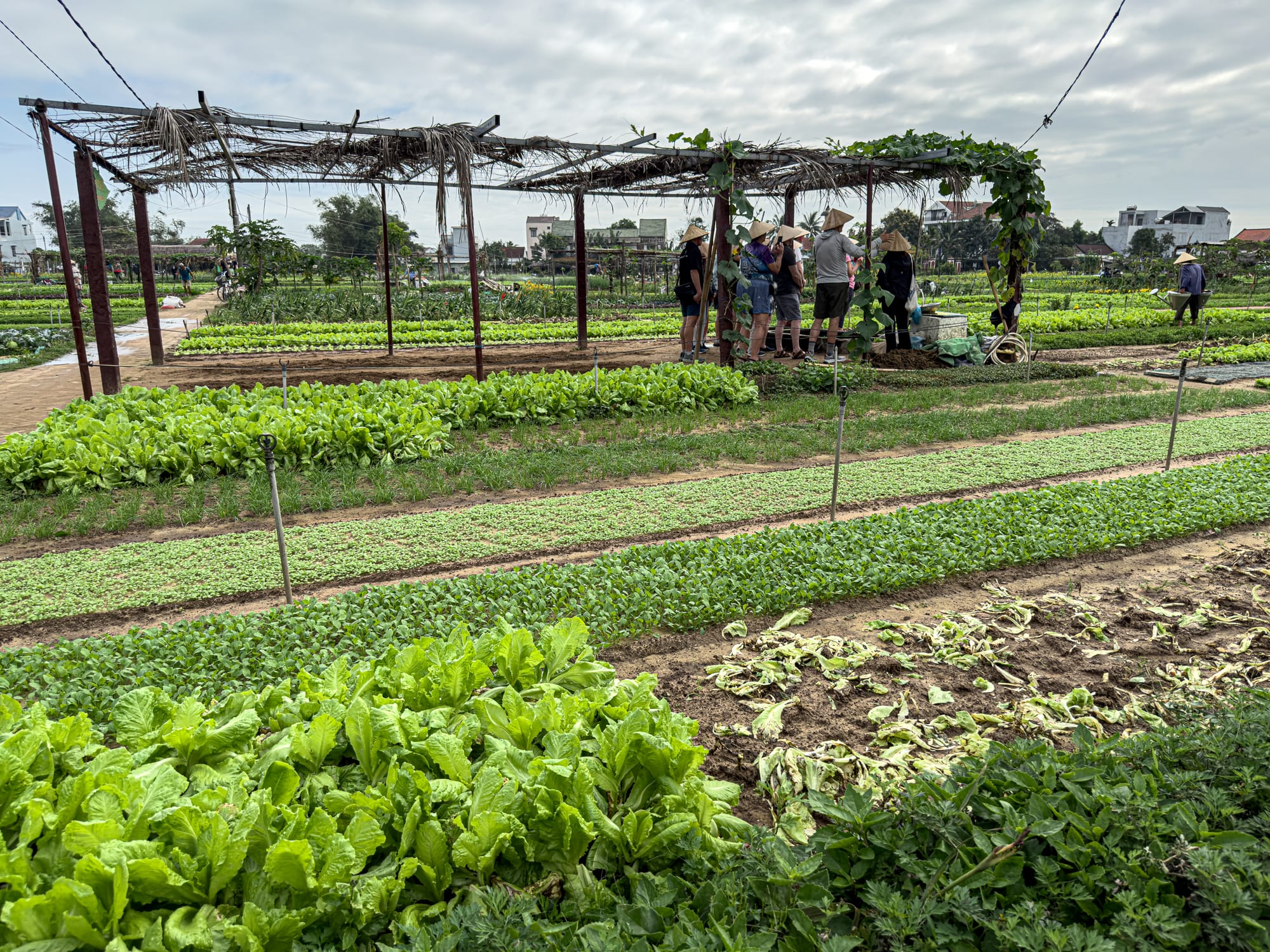
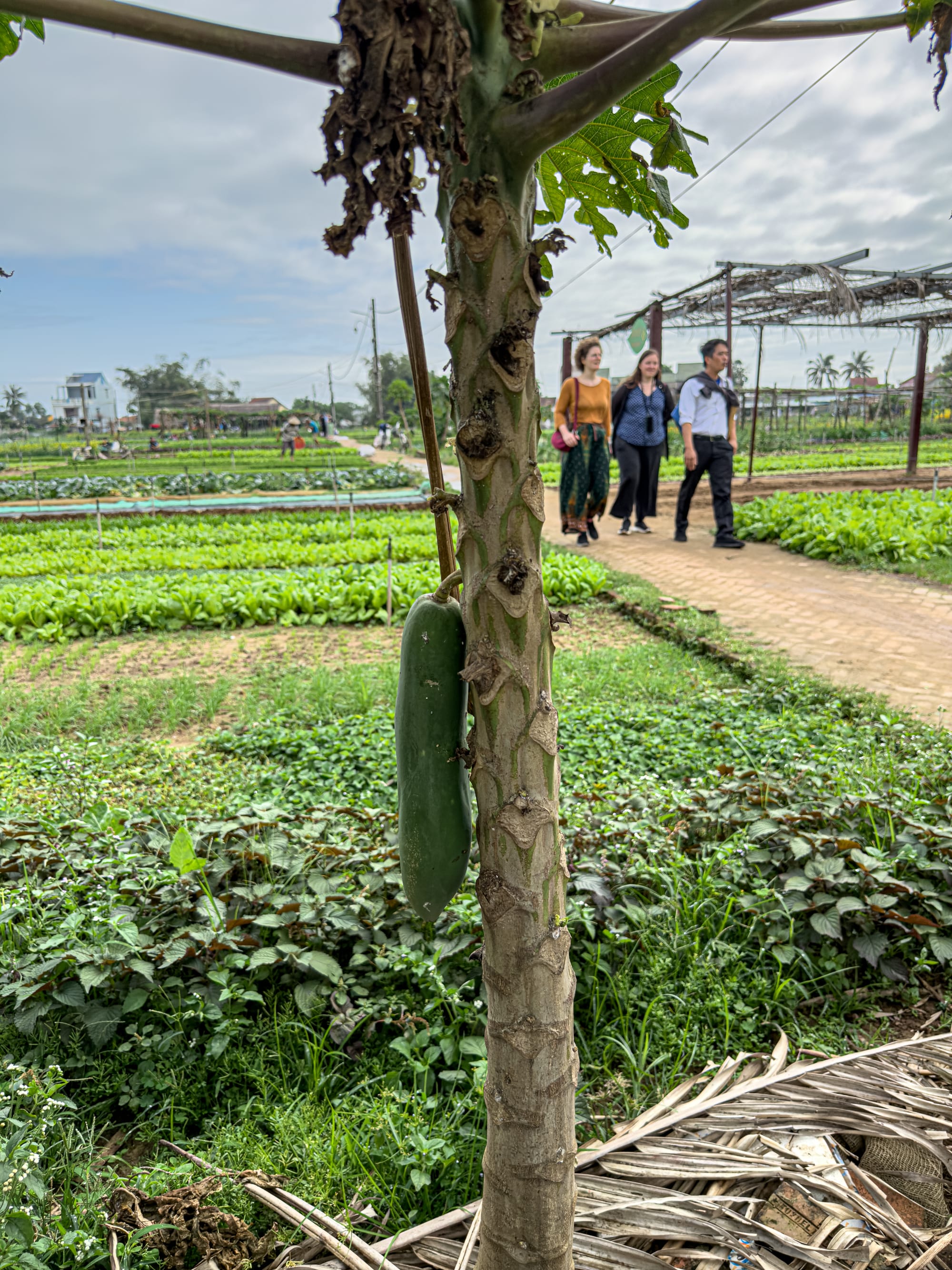
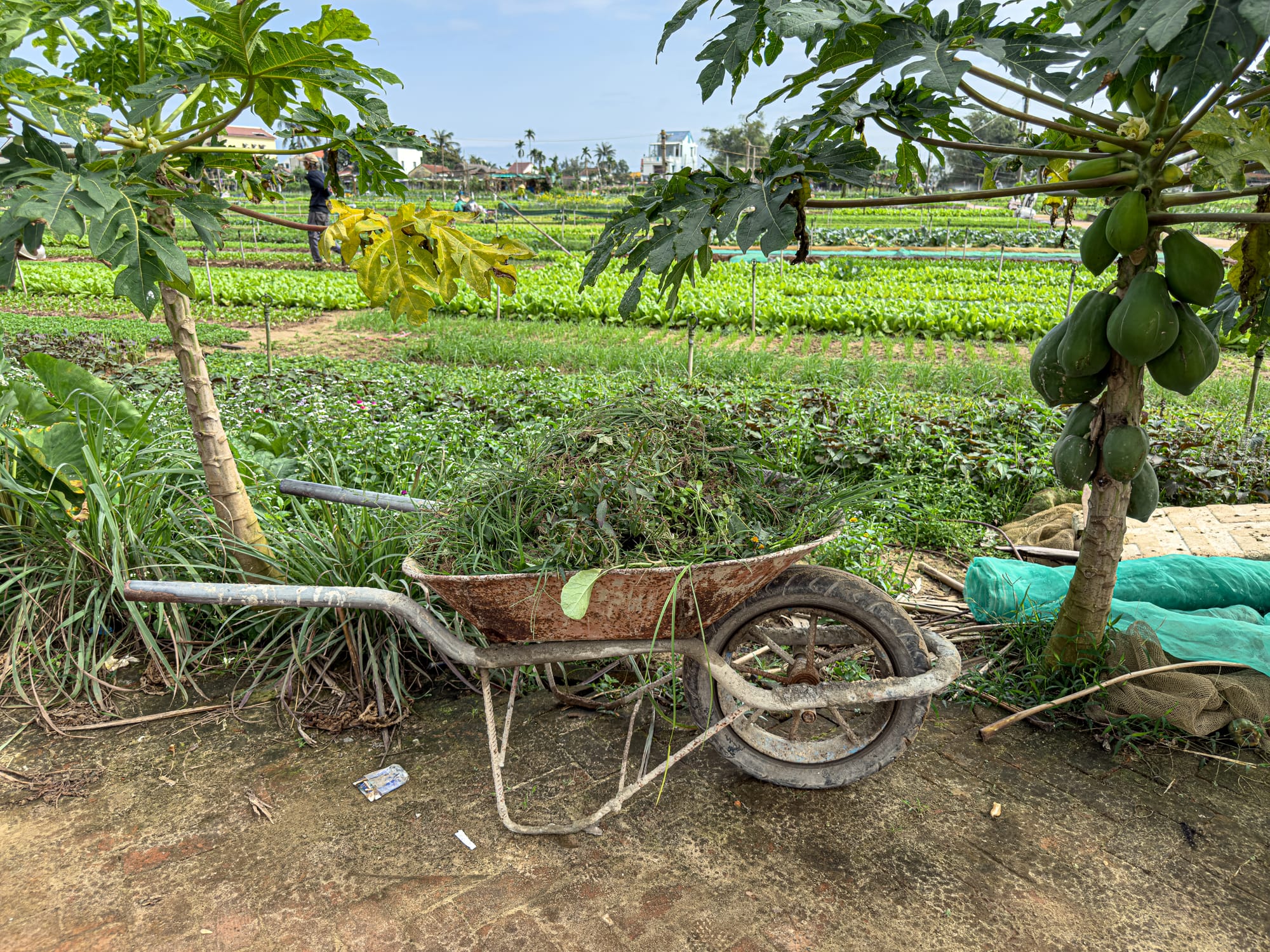
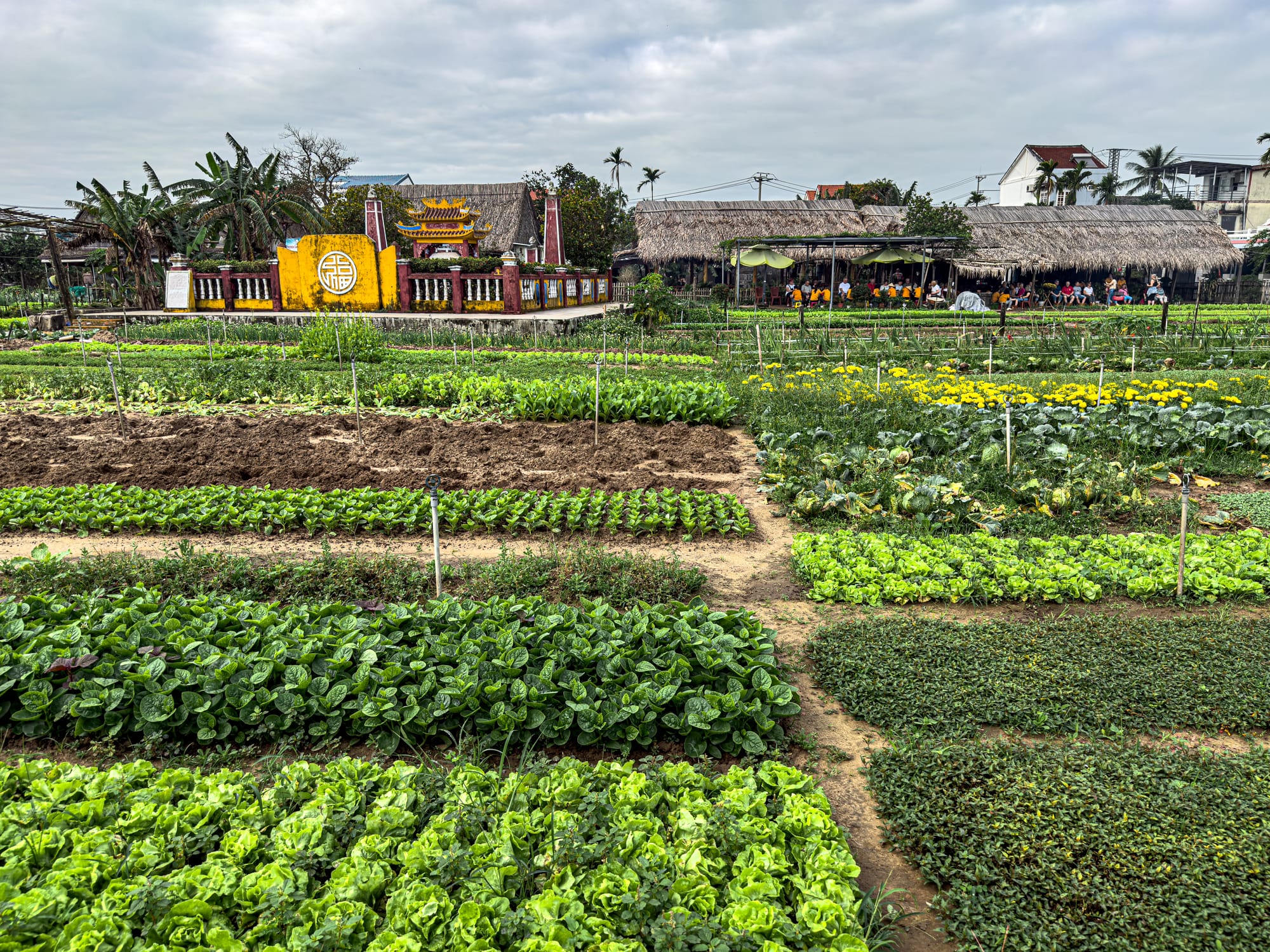
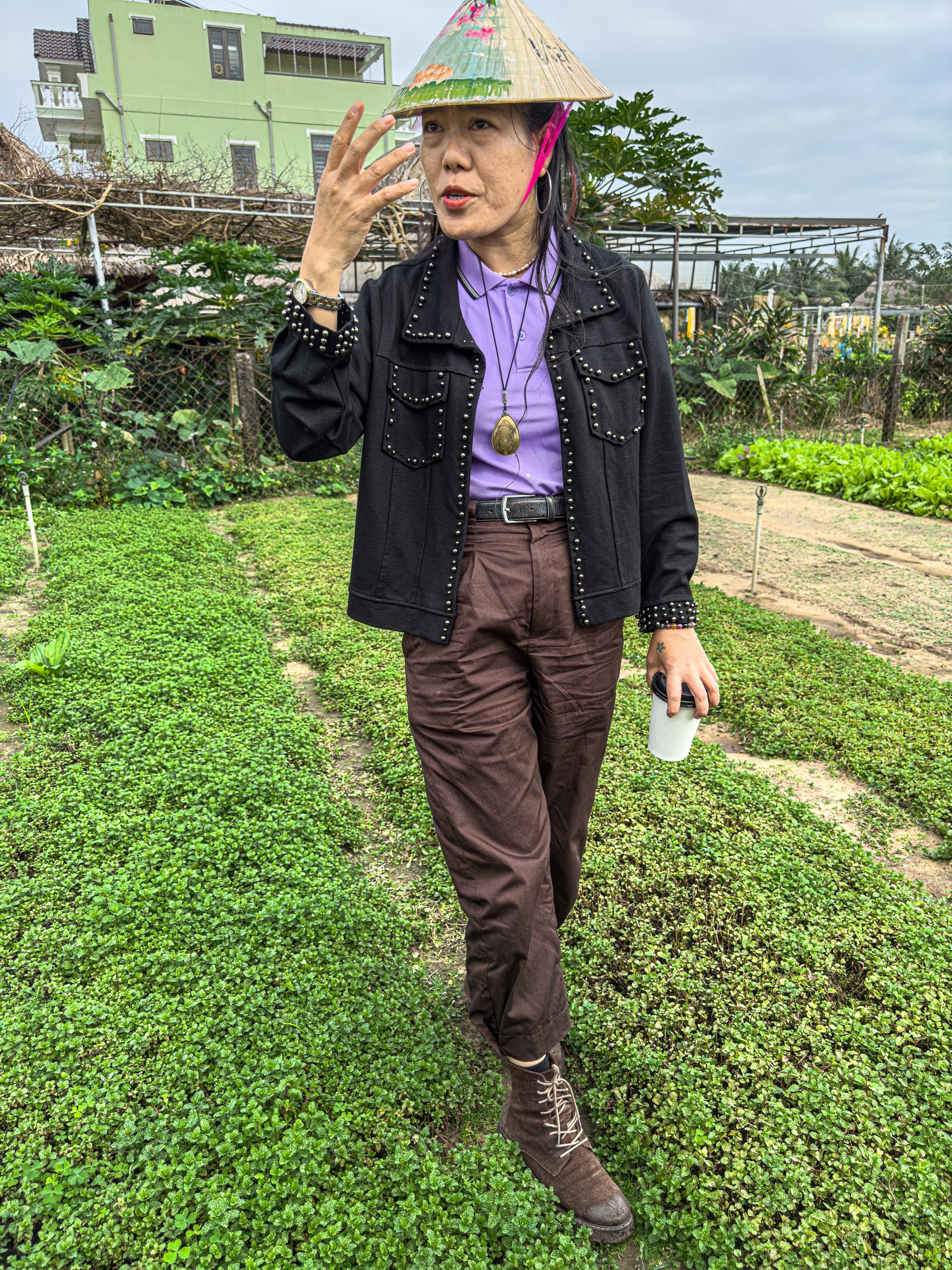
Life among the rows of herbs and vegetables in Trà Quế’s fertile fields
We met an older Vietnamese woman who had spent her life farming in the fields since childhood. Her hands and bare feet were weathered, and her face was creased from years of working under the sun. She shared her expertise with us on enriching the soil (with seaweed) and her methods for planting and watering.
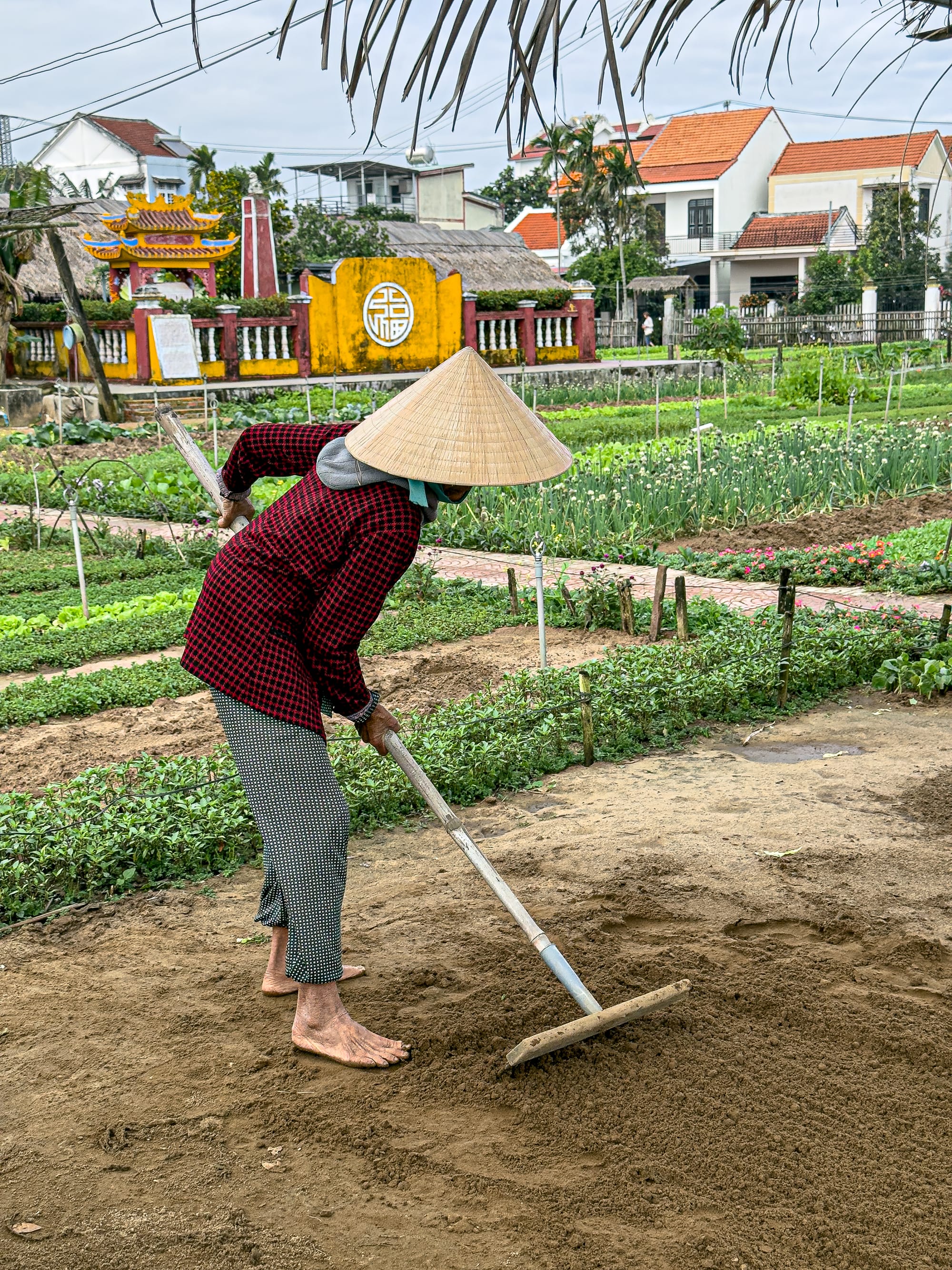
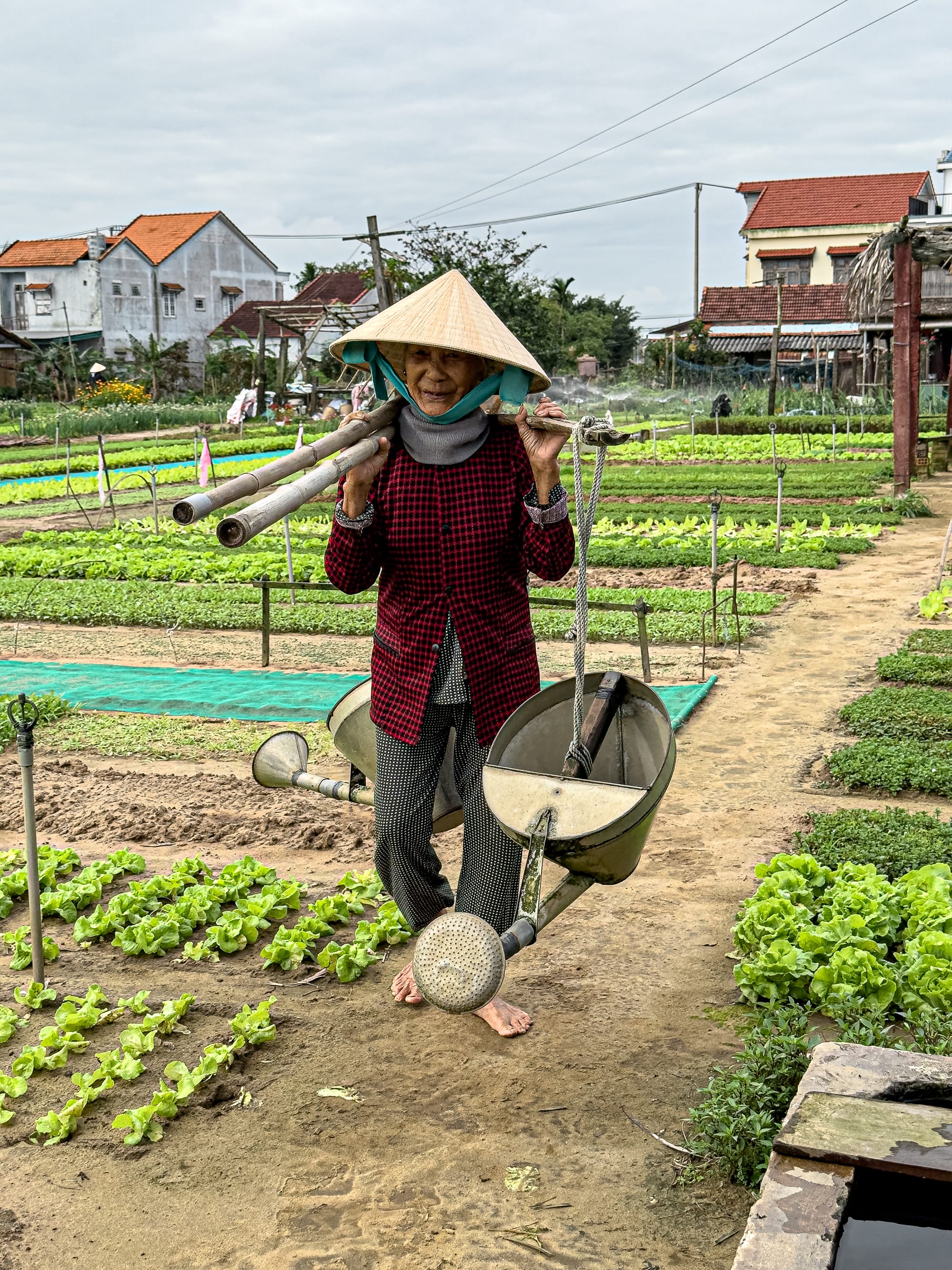
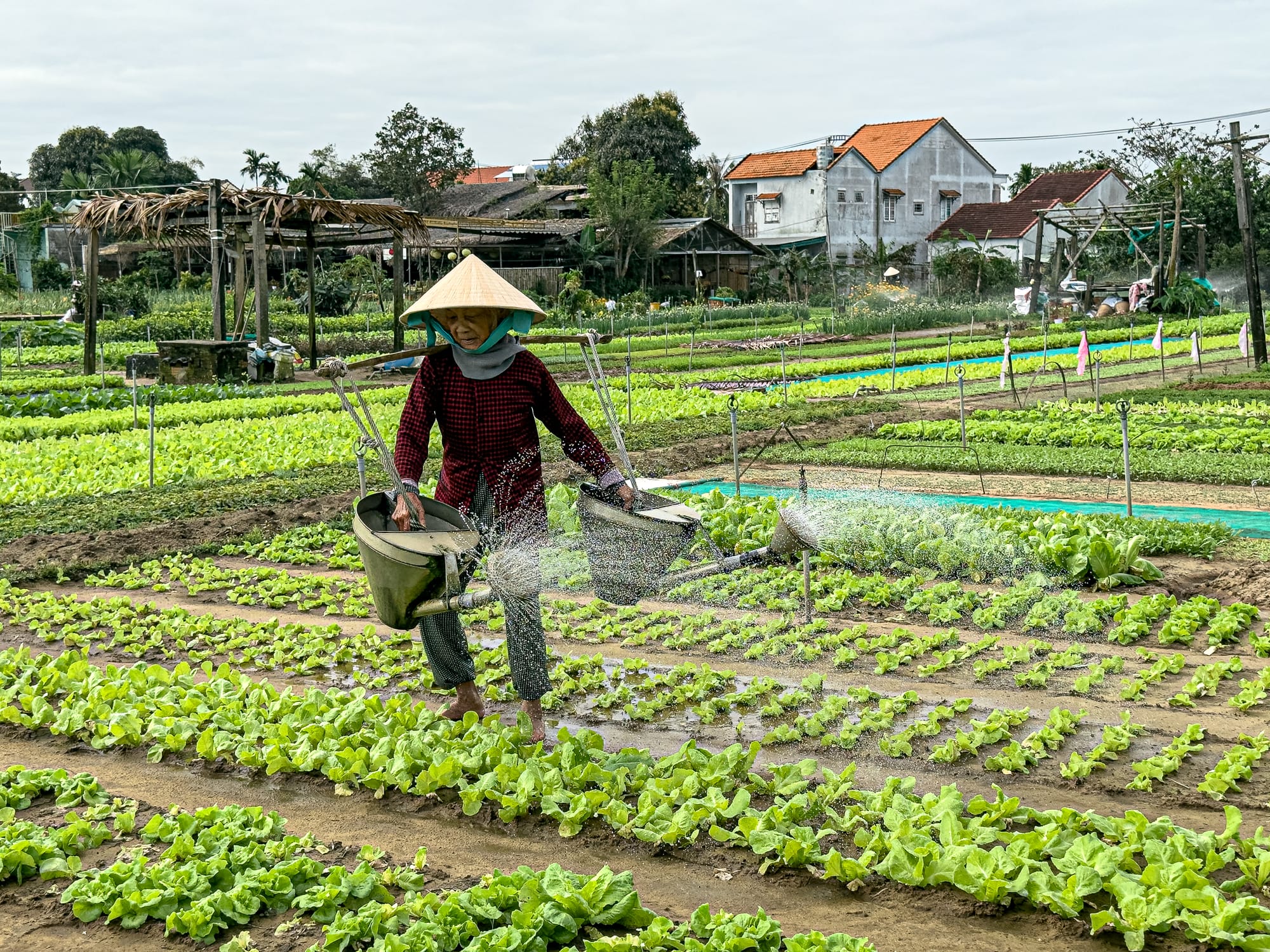
We then got to put her wisdom into practice on our own small plot.
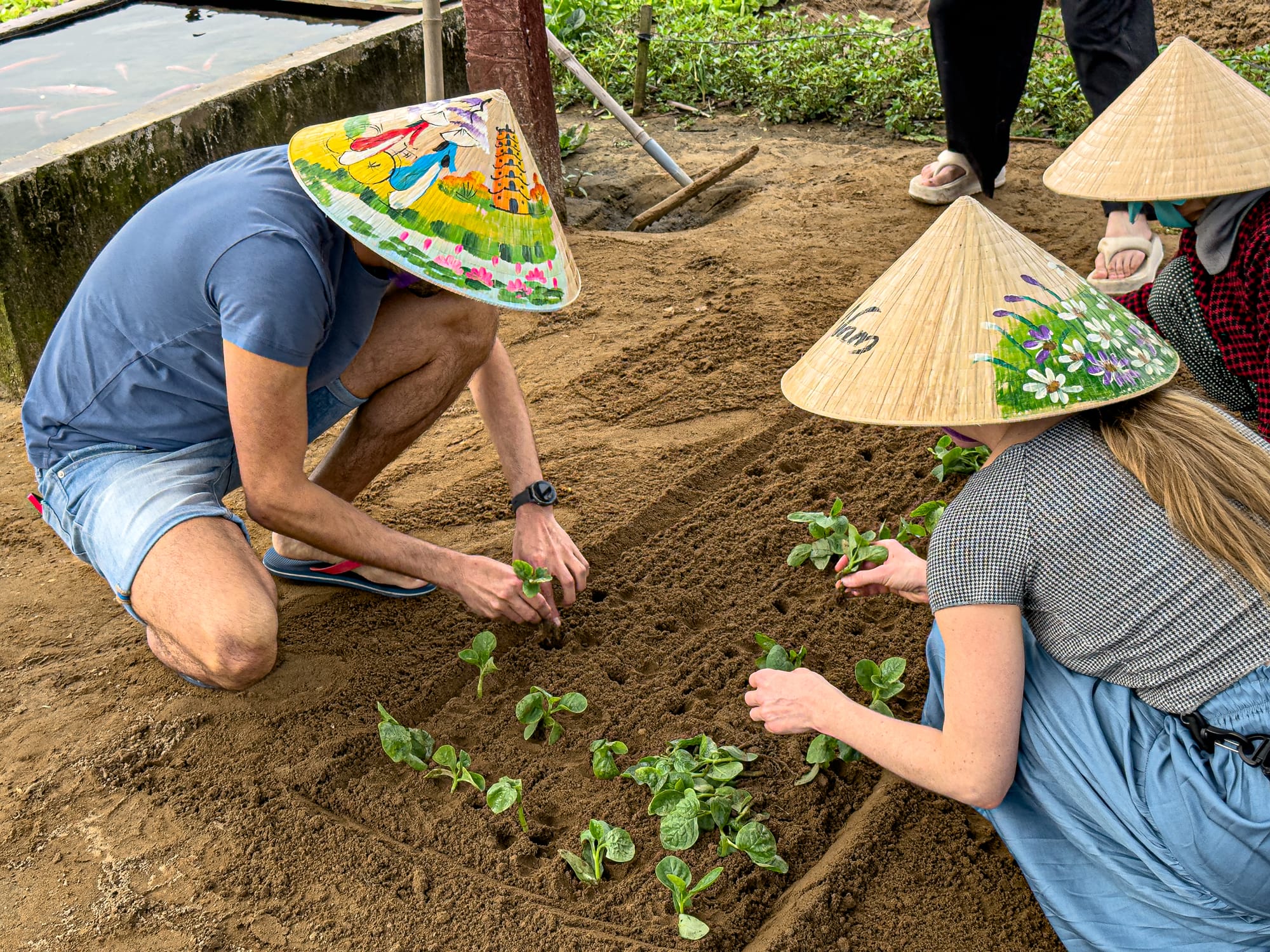
After our gardening demo, Chef Vang identified various herbs and gave us a taste test.
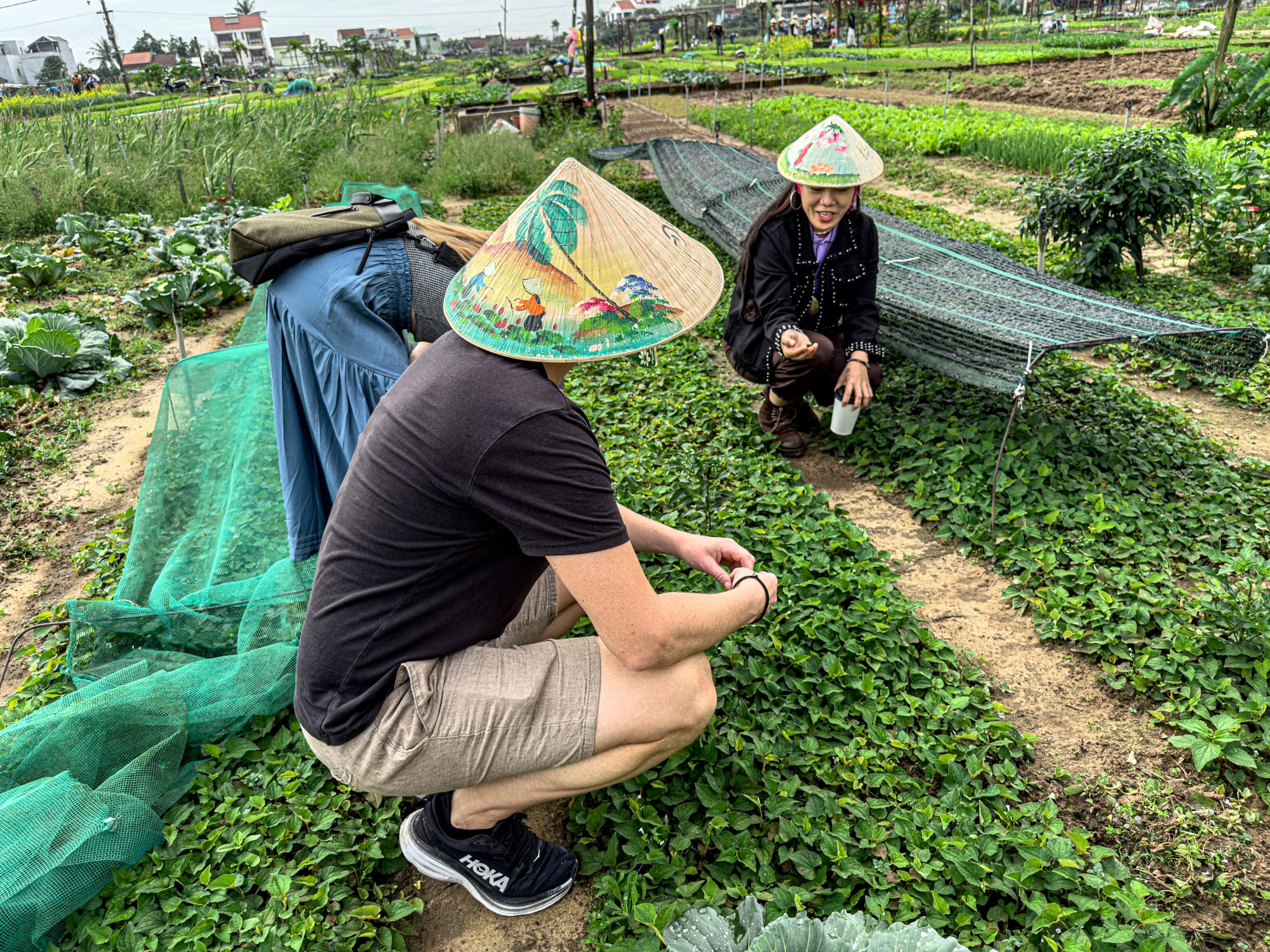
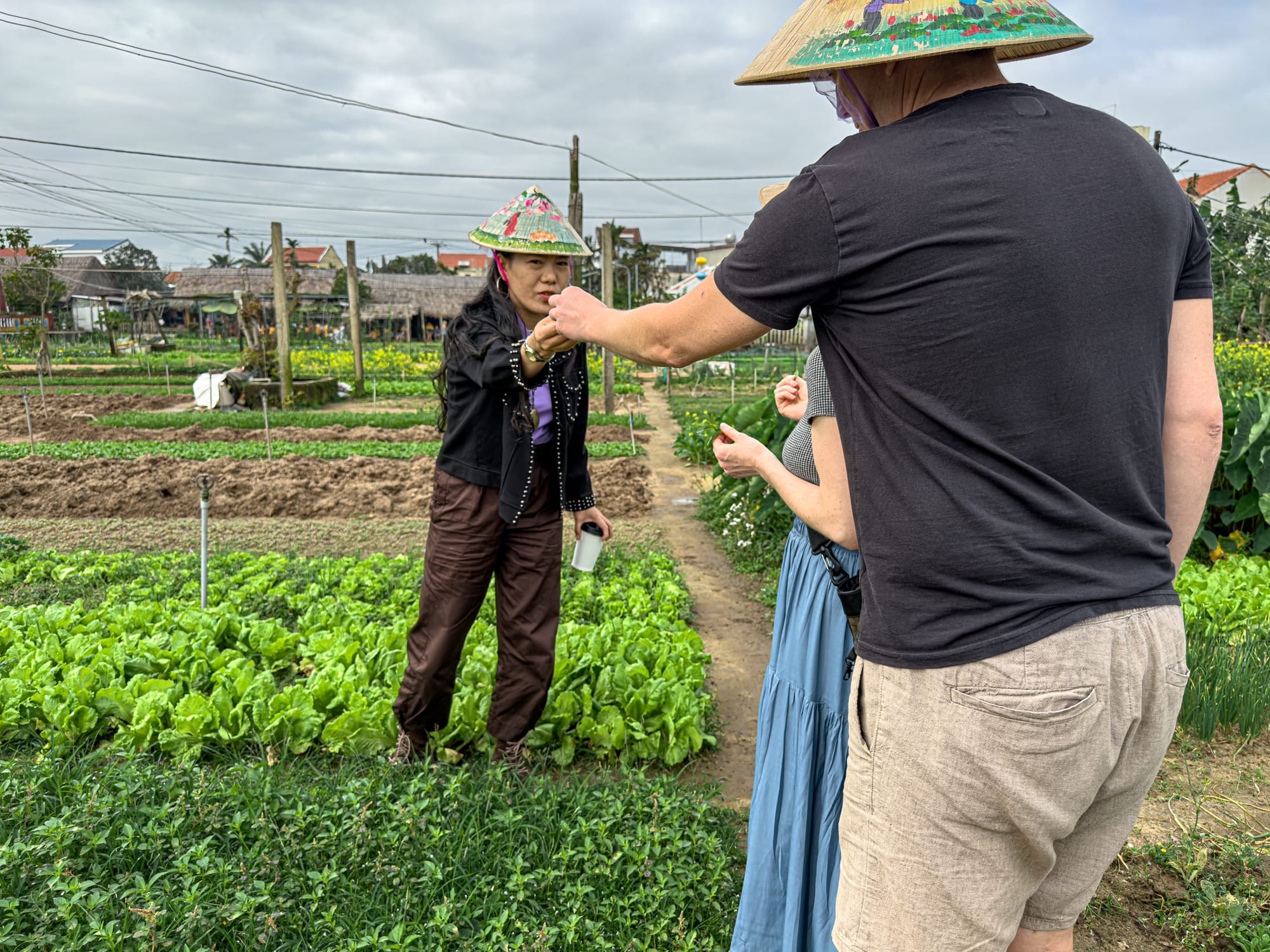
Sampling fresh herbs in the gardens of Trà Quế
Finally, we went to a cozy café. There, we enjoyed a refreshing local drink made with basil seeds. Gelatinous, the soaked seeds floated in the glass like tiny jewels.
Tan An Market
After the vegetable village, we went to Tân An Market, a bustling local spot where vendors sell fresh produce, most of which comes from nearby farms, including Trà Quế.
Wandering through the market's compact aisles, our senses were treated to a kaleidoscope of vibrant colors, with pyramids of juicy fruits, crisp vegetables, and aromatic herbs stacked high.
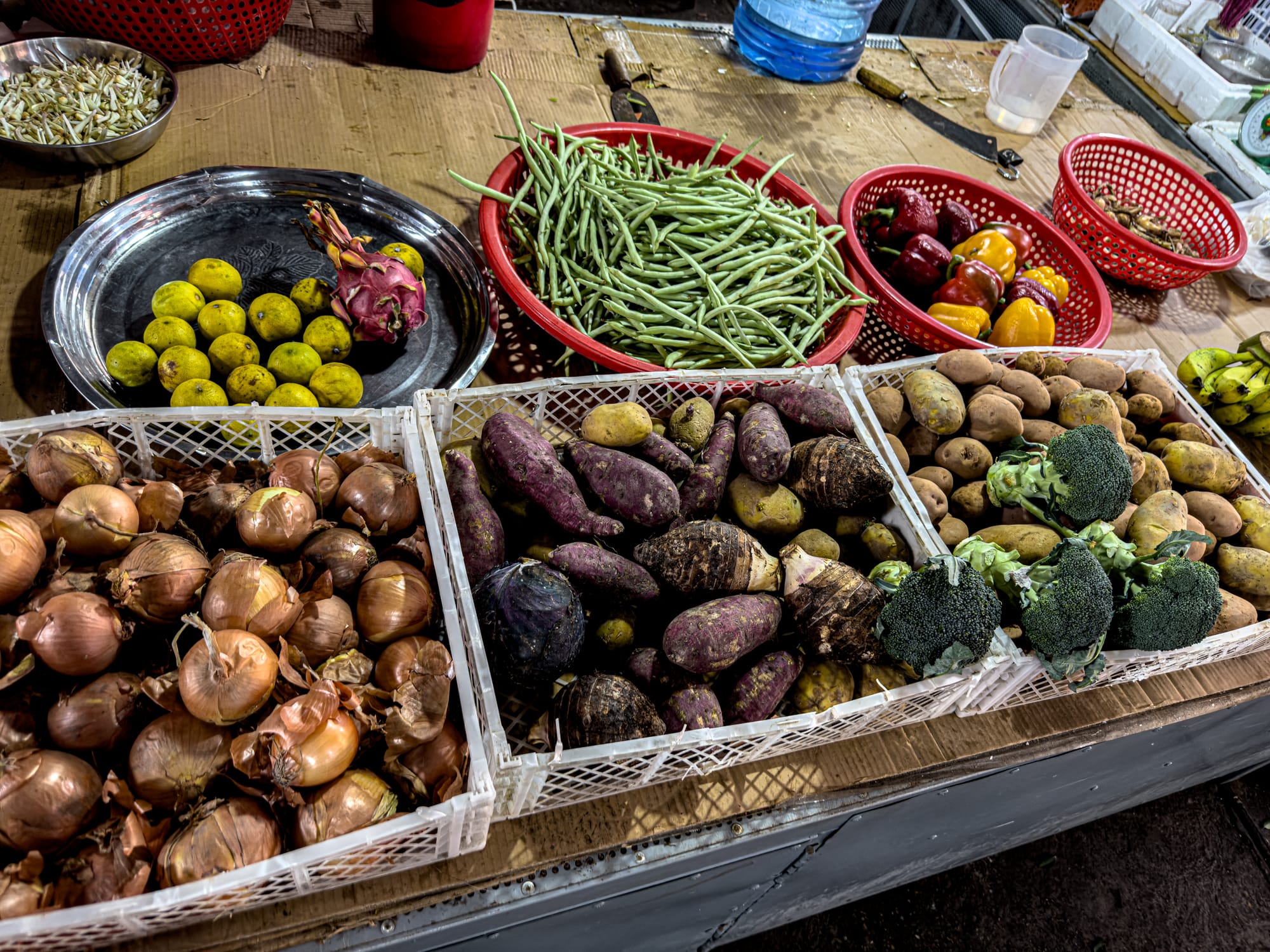
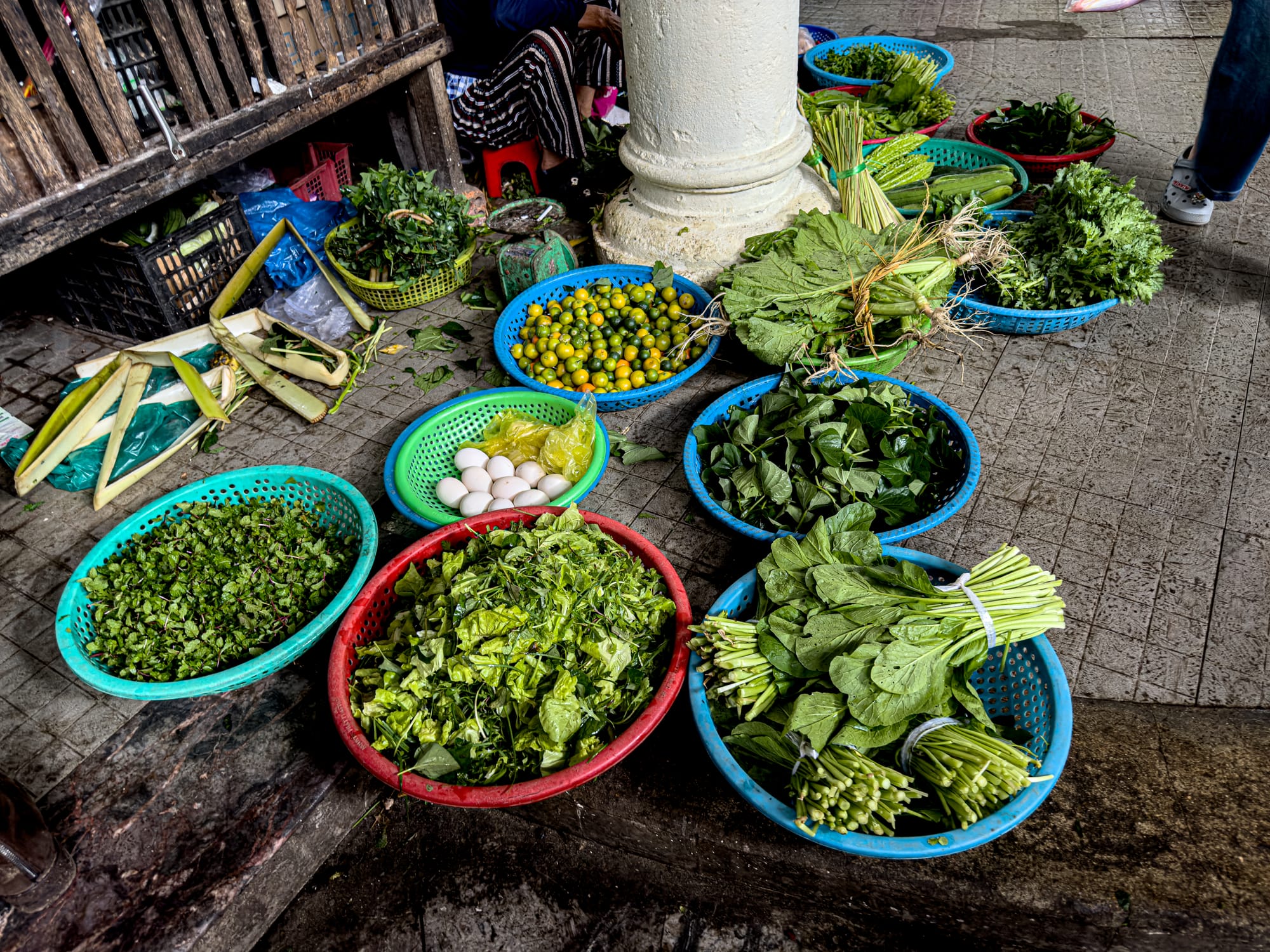
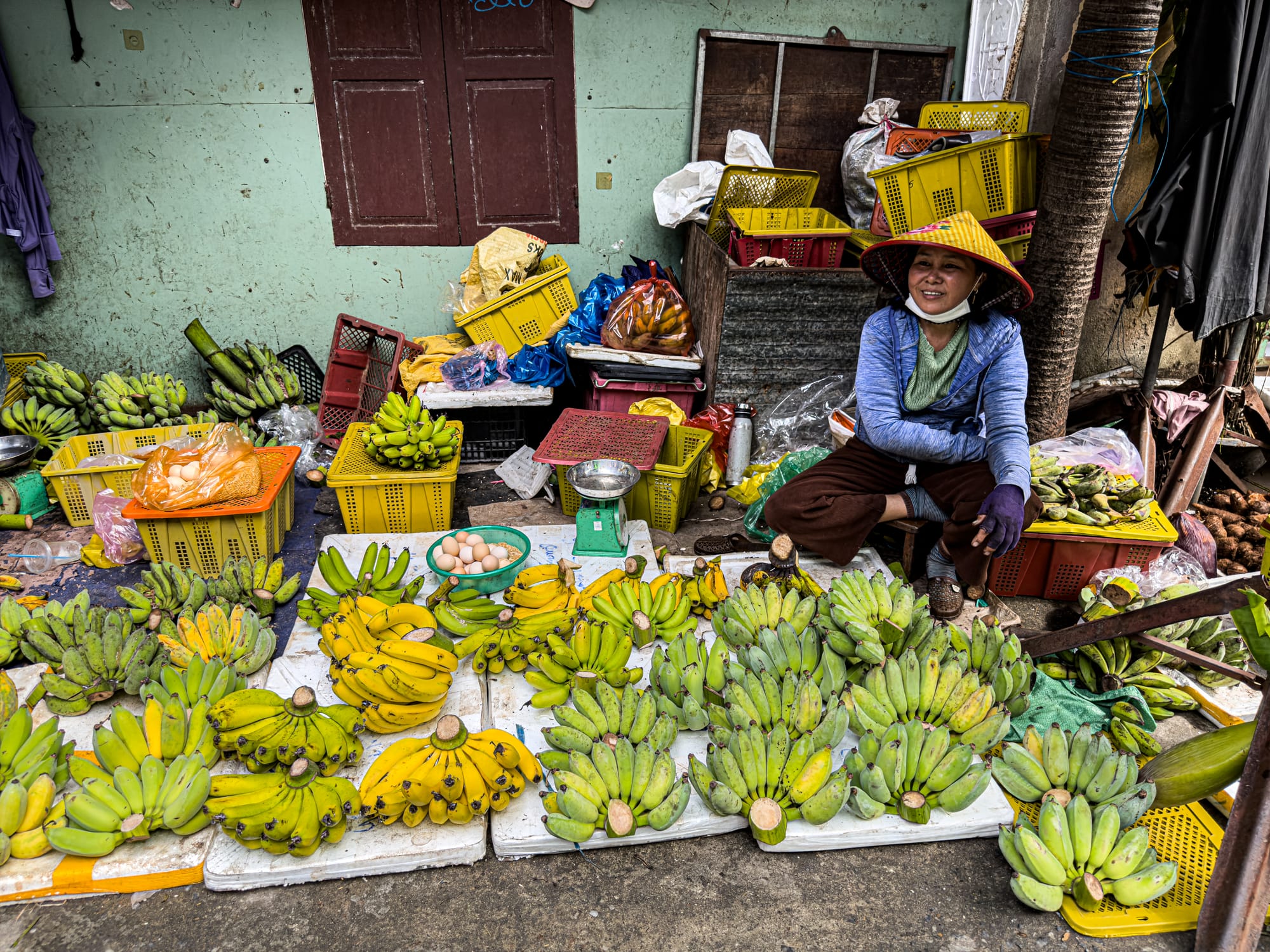
As we traversed the stalls, Chef Vang introduced us to some exotic local fruits, sharing their unique flavors and textures. She also handpicked a selection of fragrant herbs–basil, mint, and lemongrass–that we would later incorporate into our culinary creations.
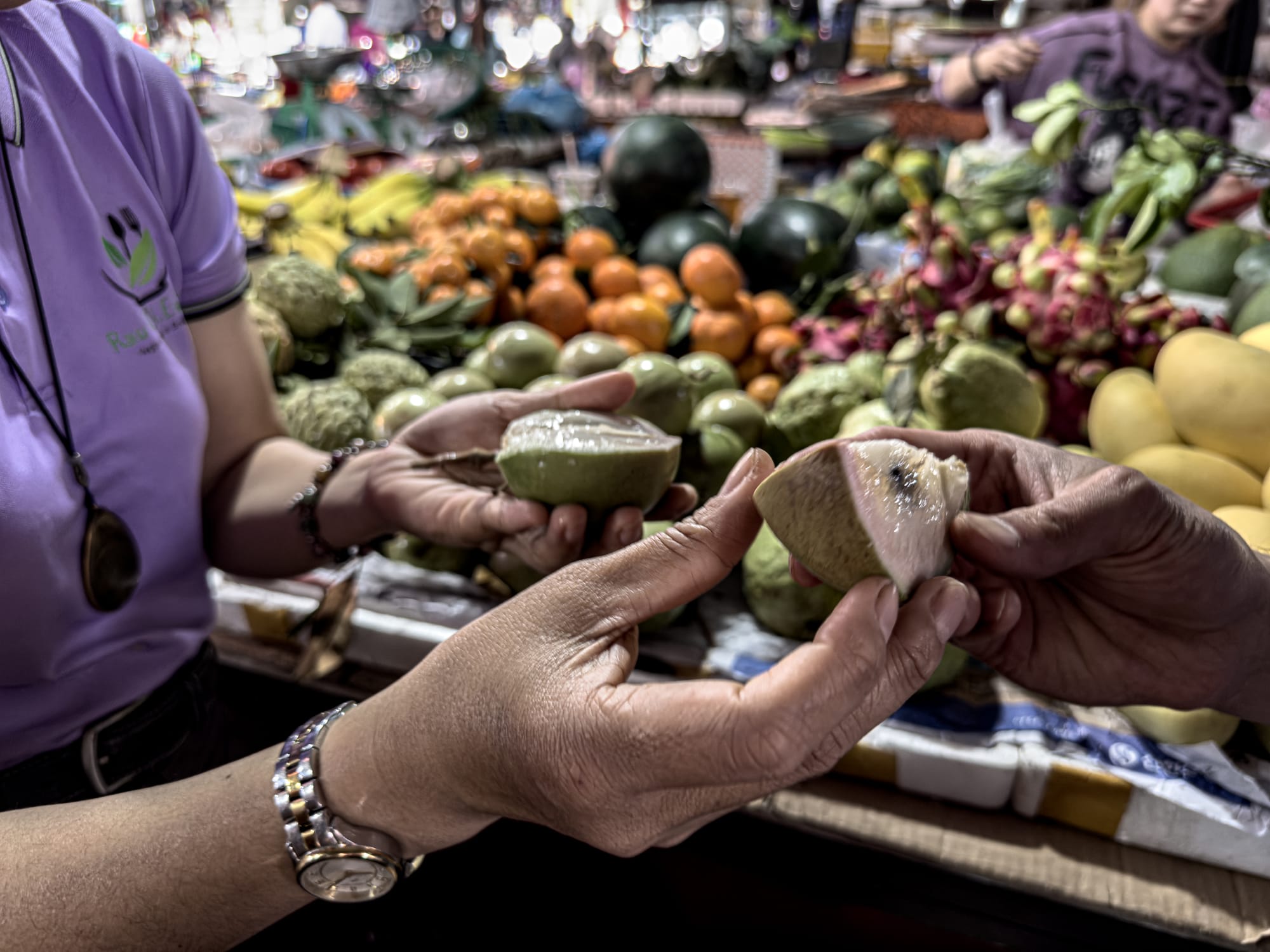
Lastly, Chef Vang highlighted some innovative vegan products on offer from specific vendors, showcasing the resourcefulness of the local artisans in veganizing aspects of the traditional cuisine.
Both the vegetable village and market tour lasted about half of the class, which we enjoyed because it was pleasant to start the day actively, and we felt that the local context significantly enriched the experience.
Cooking with Chef Vang
When we arrived back at the Rau Ơi Eatery, it was time to begin cooking. On the table was an absolutely stunning presentation of spices, sauces, and flowers, alongside cut-up fruit and veg.
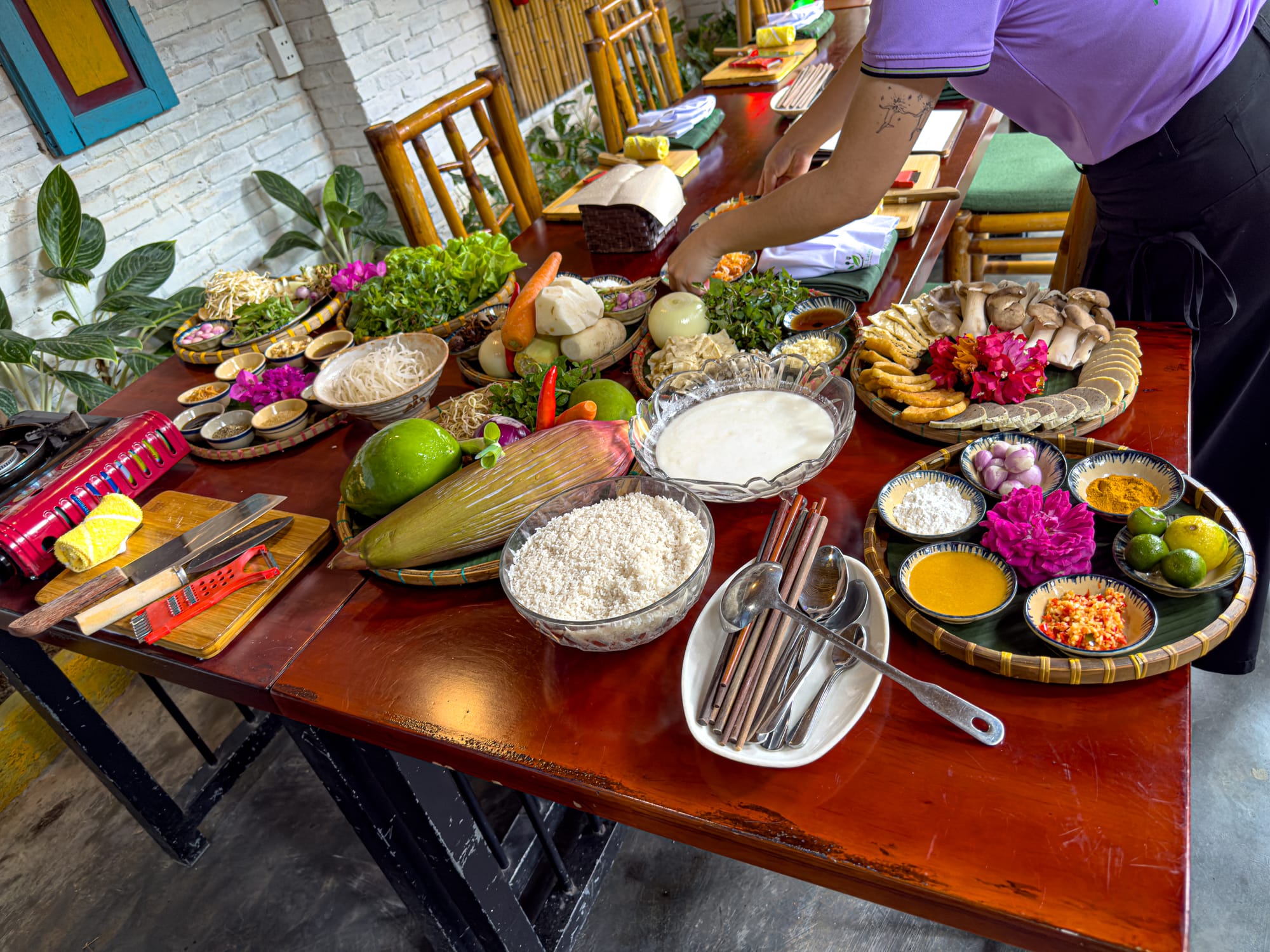
Although the phở was the last dish we ate, it was the first dish we started preparing to ensure we had a well-developed and flavorful broth. We began by cutting various vegetables, roots, and herbs, and we stuffed them into a metal contraption that we would then submerge in boiling water.
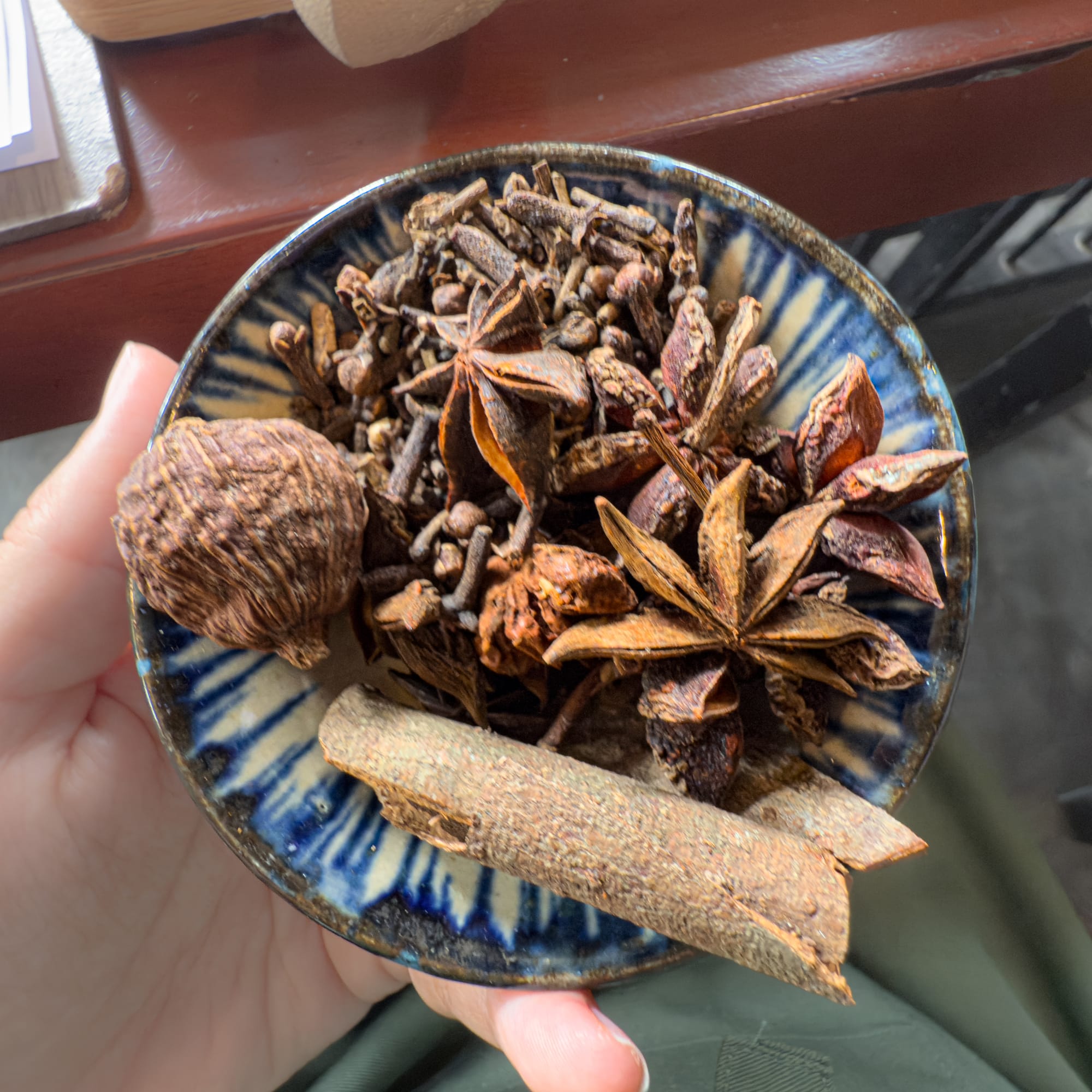
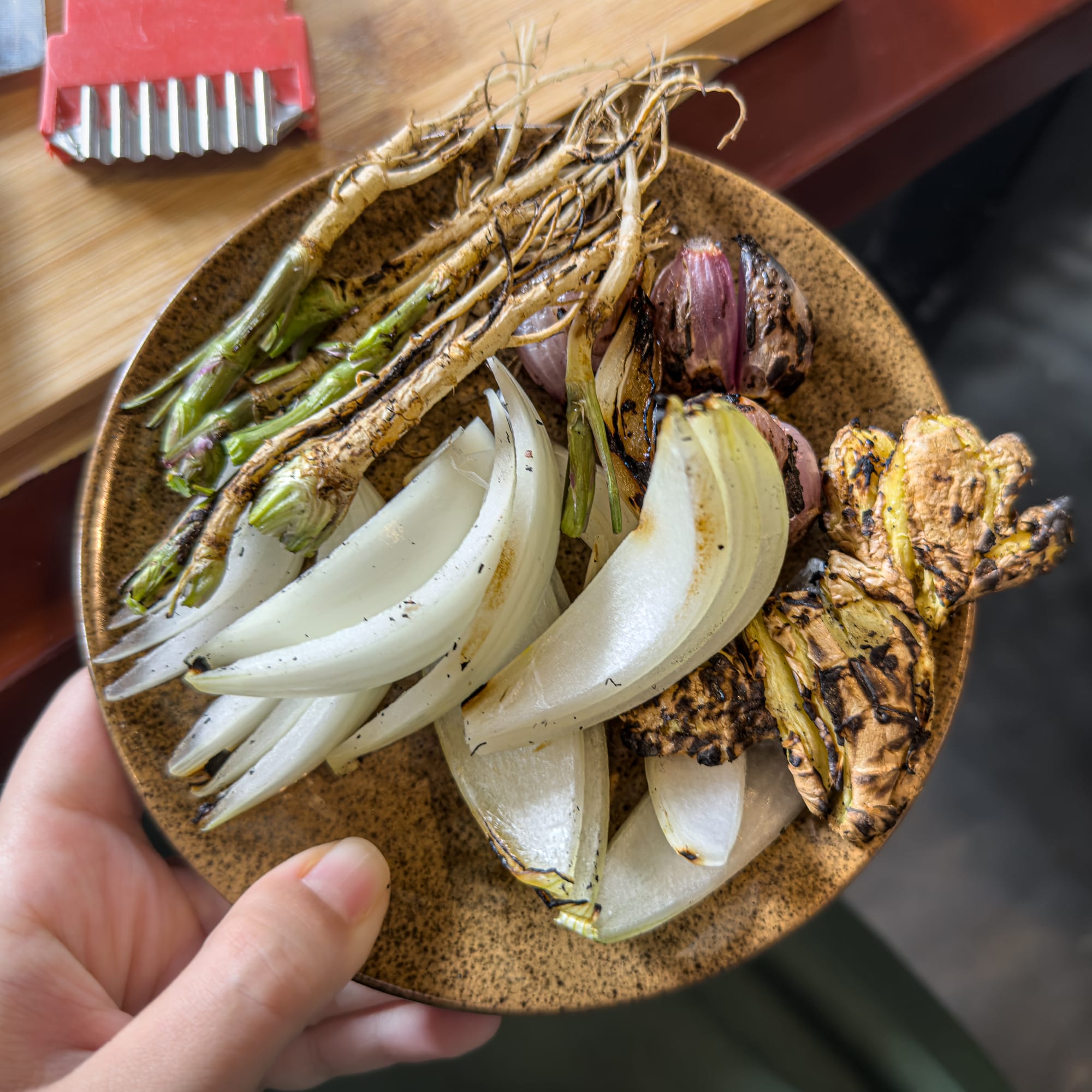
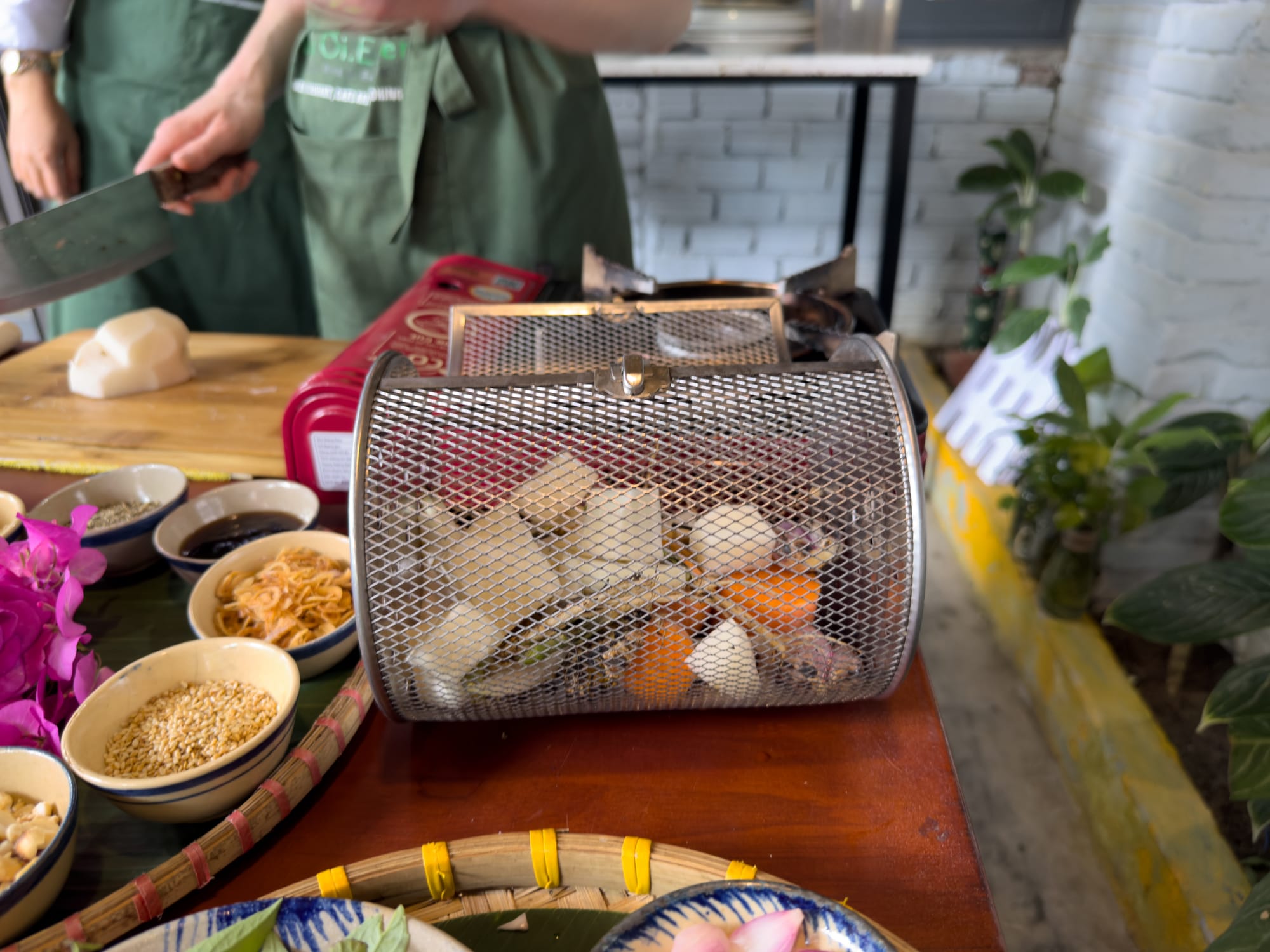
Fragrant spices and charred aromatics prepared for a rich Vietnamese phở broth
Our personal favorite part of the cooking class was learning how to make fresh rice paper rolls from scratch. We've only ever seen the dried store-bought ones that you dip in water to prepare. It was pretty amazing to watch Chef Vang pour rice liquid onto a cloth over boiling water and see a fresh rice paper roll come out of it!
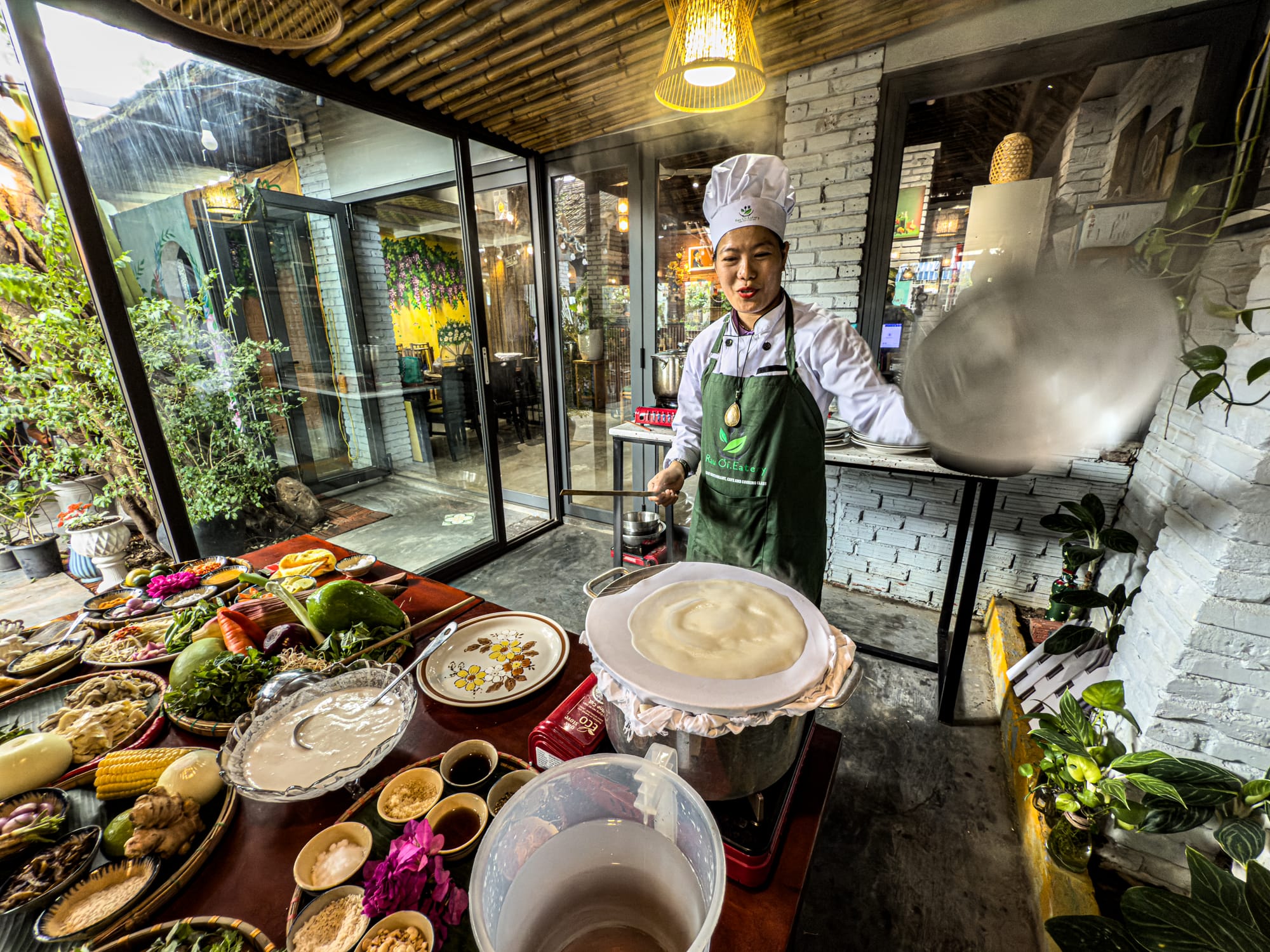
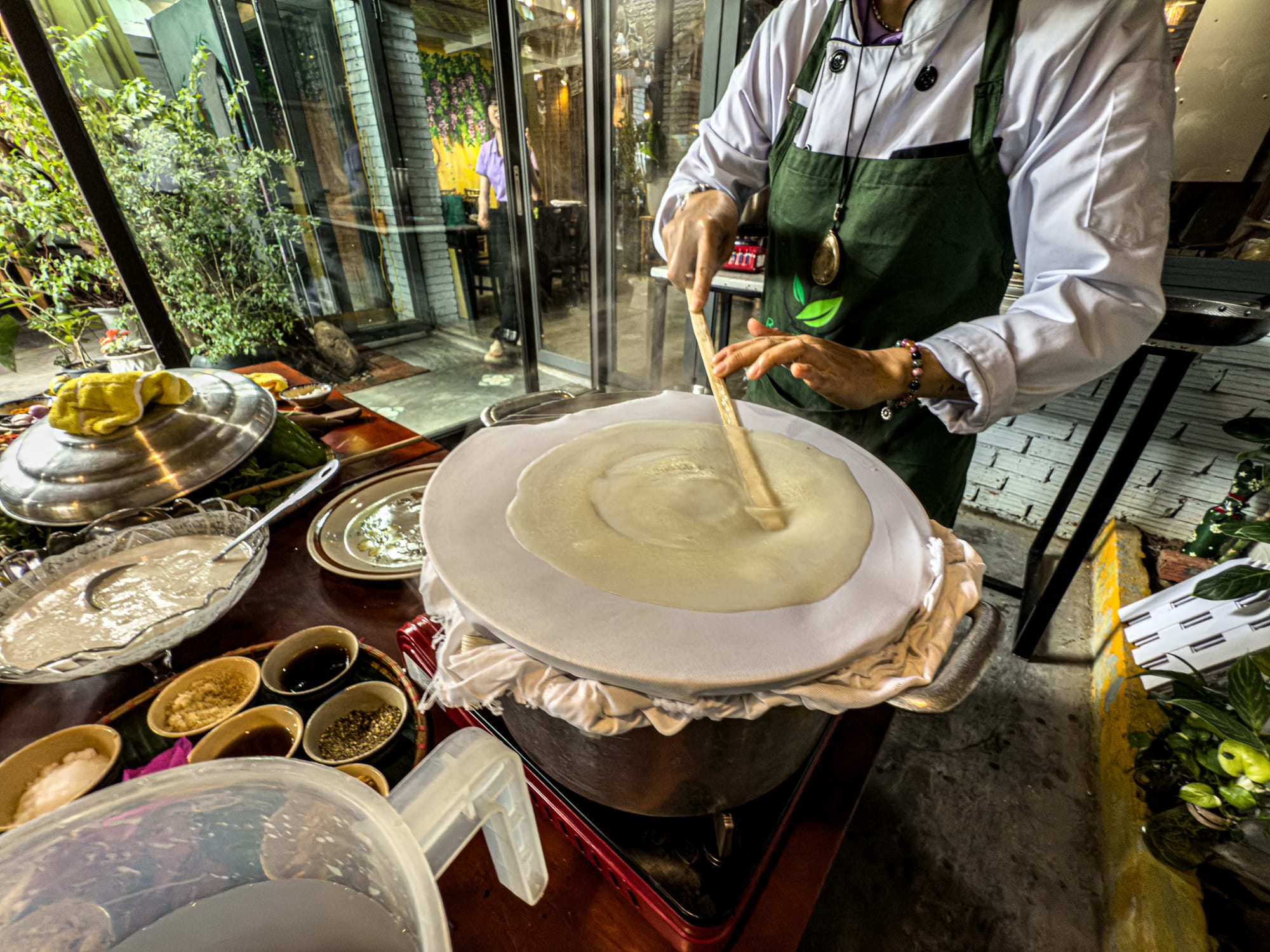
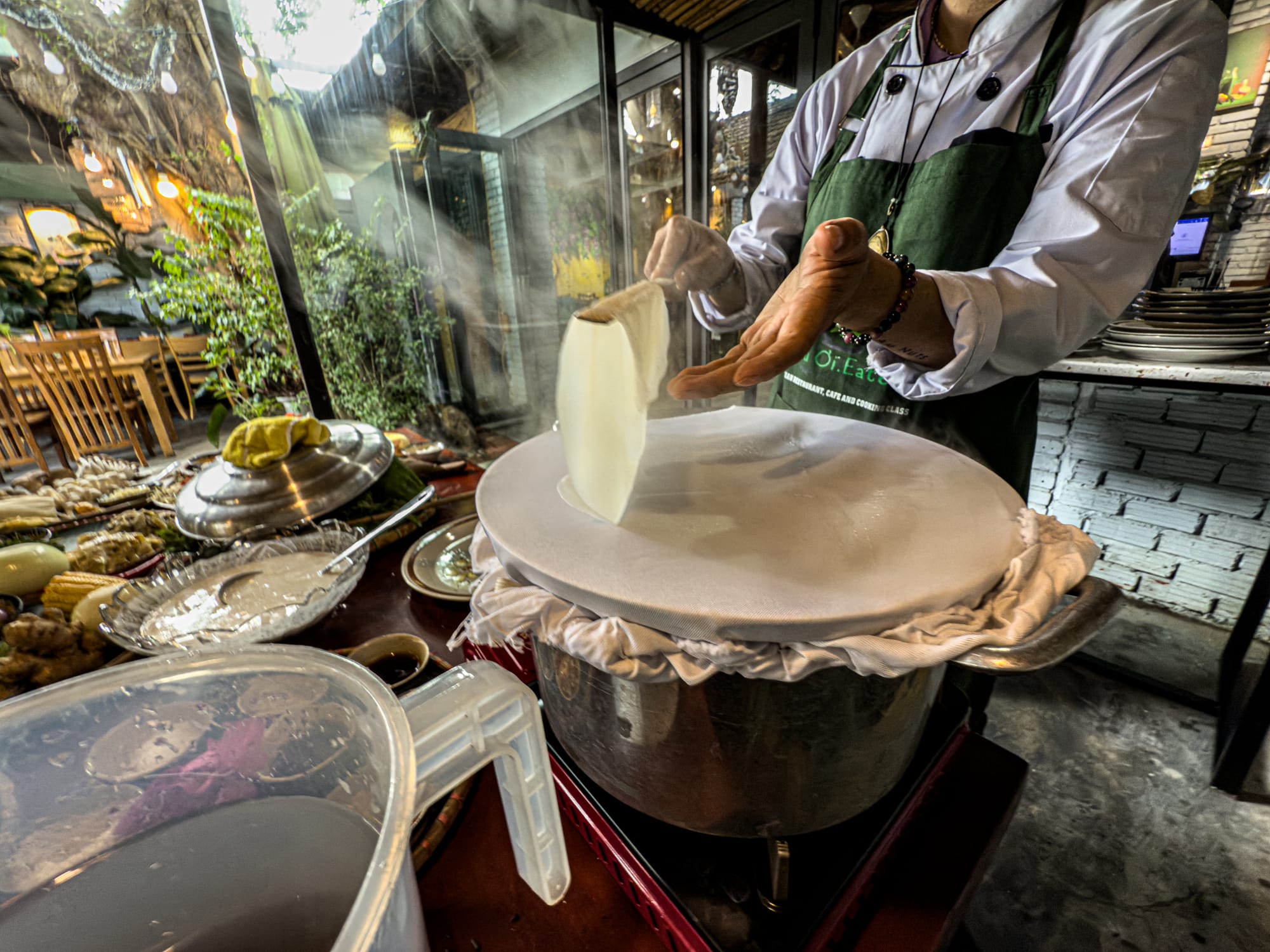
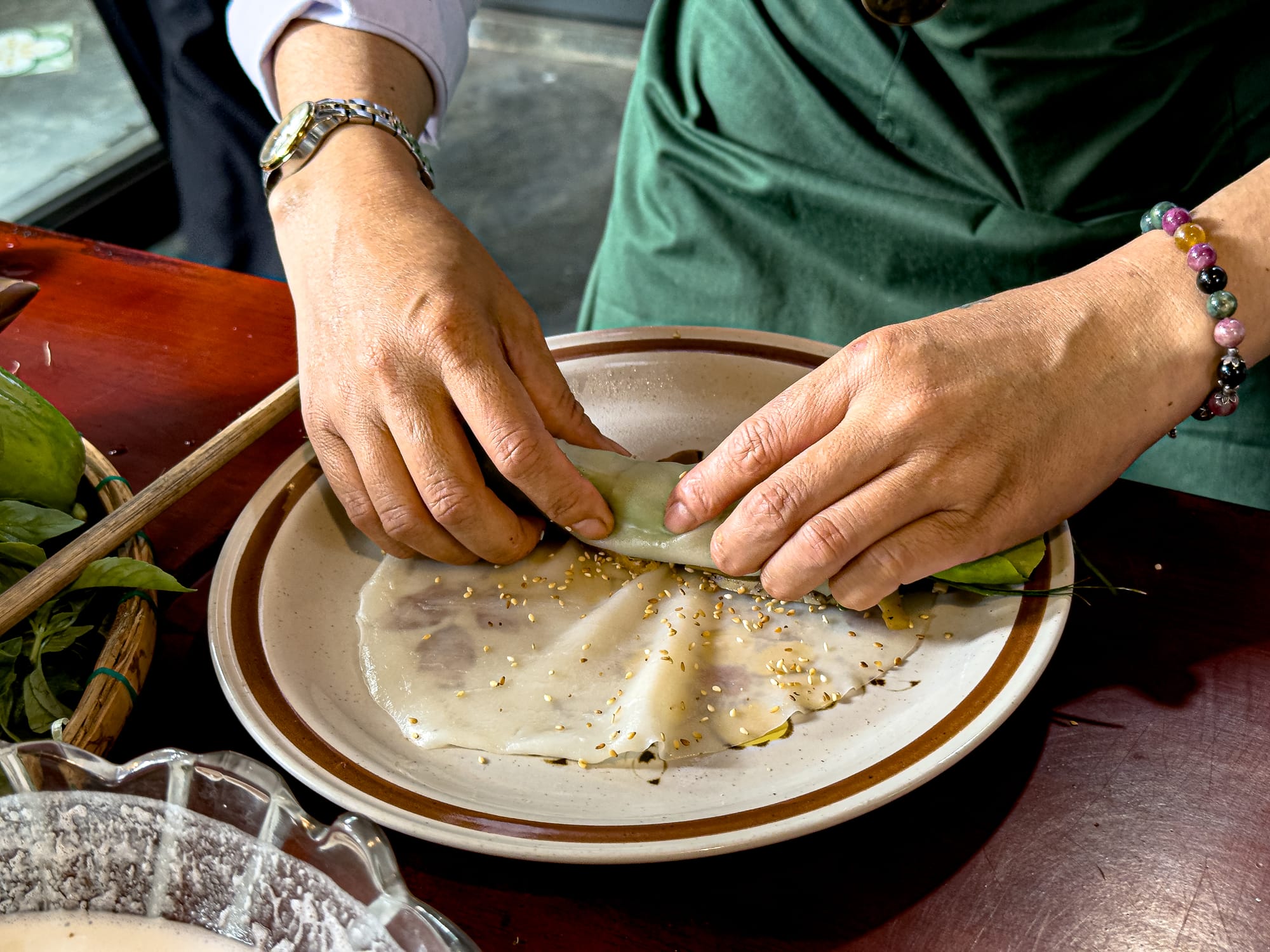
Chef Vang making rice paper from scratch
Our favorite dishes were the fresh spring rolls and the banana blossom salad. The salad had such an intricate flavor, in large part due to the dressing, which had a secret ingredient that made it shine: passionfruit juice.
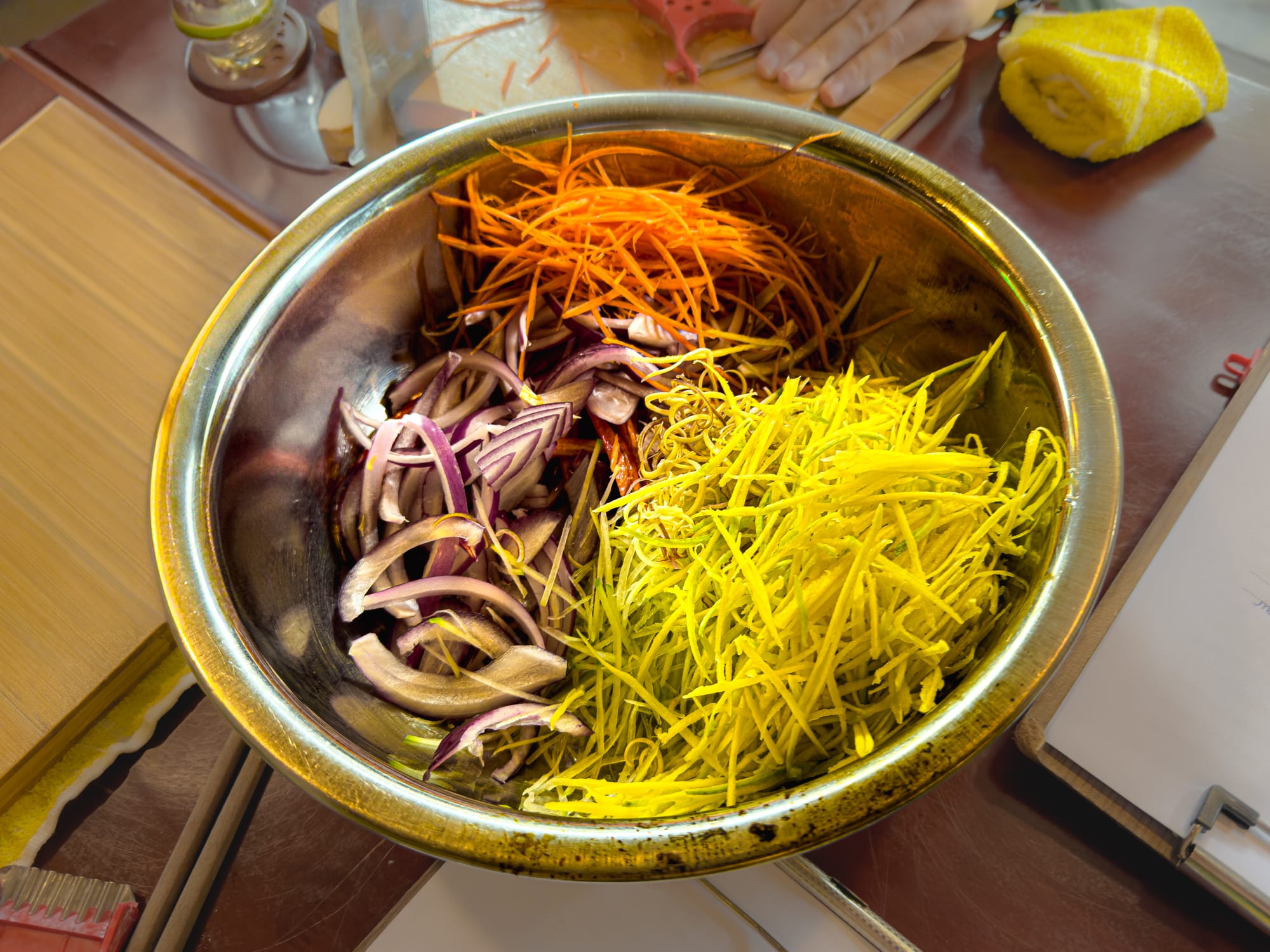
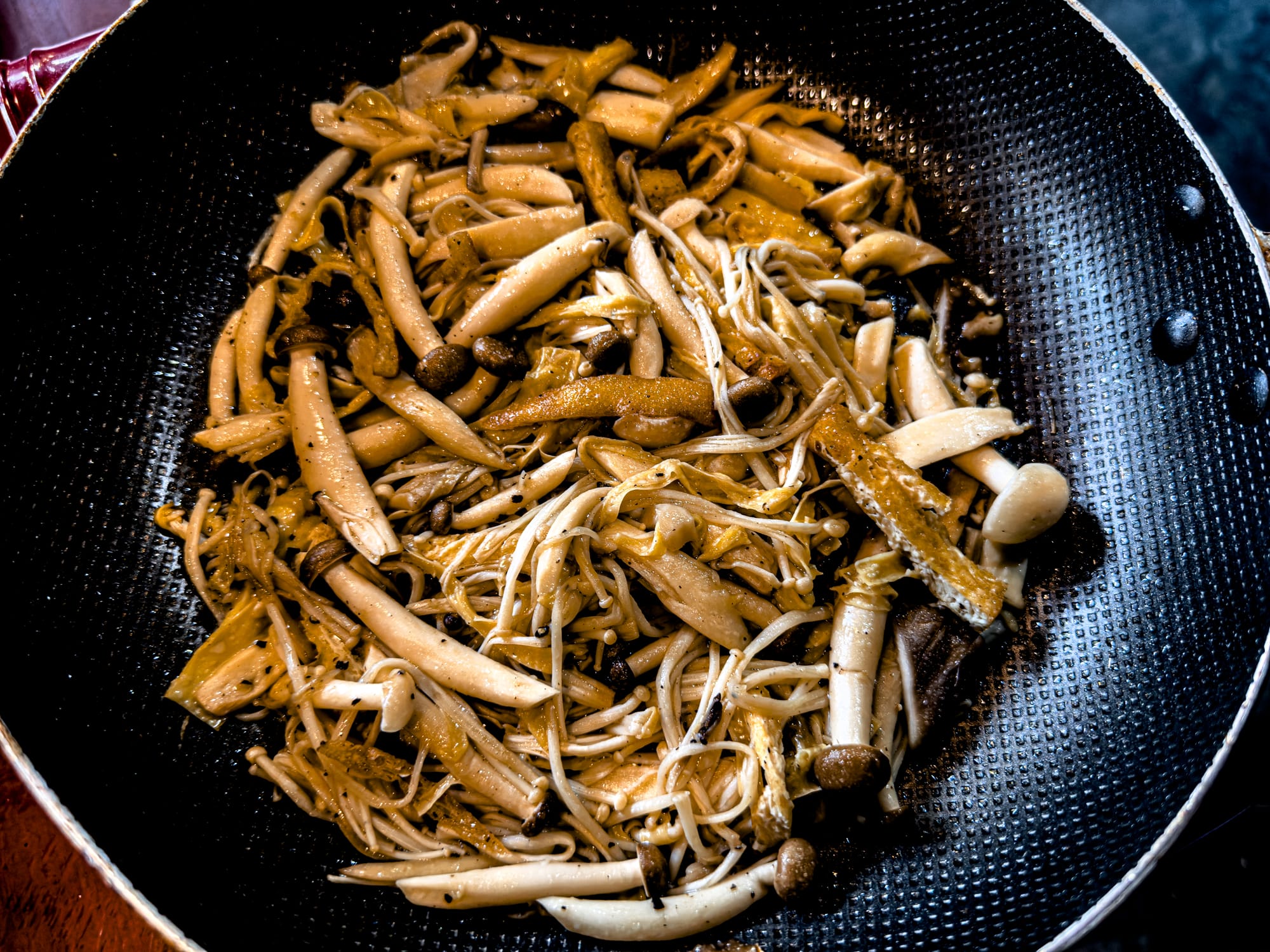
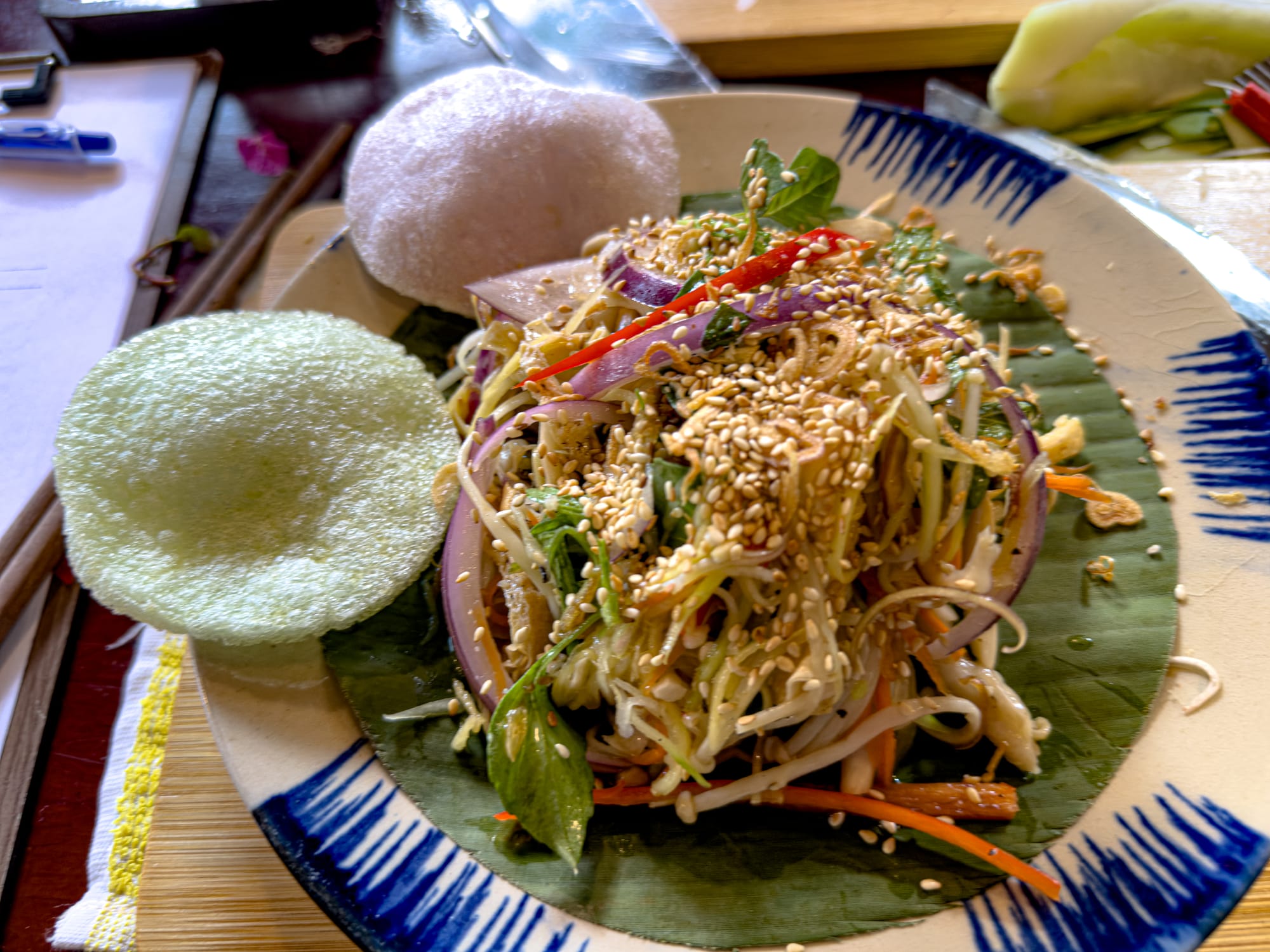
The (vegan) chicken rice, a traditional dish specific to the Hội An region, had some interesting flavors as well. We cooked the rice with turmeric, which made it yellow, and in coconut water, which gave it a unique sweetness against the added sea salt. The recipe used tofu skin and mushrooms to make the "chicken."
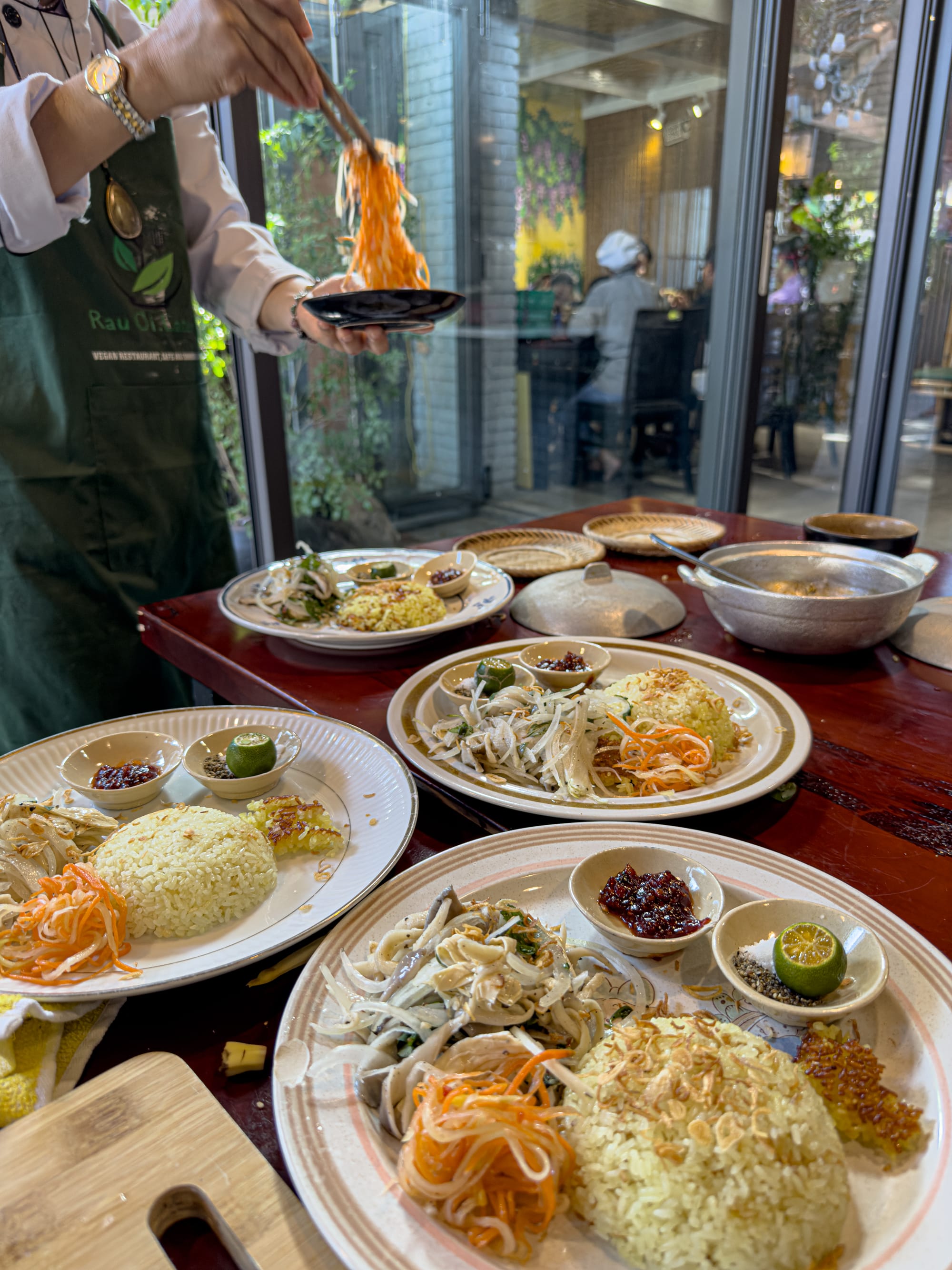
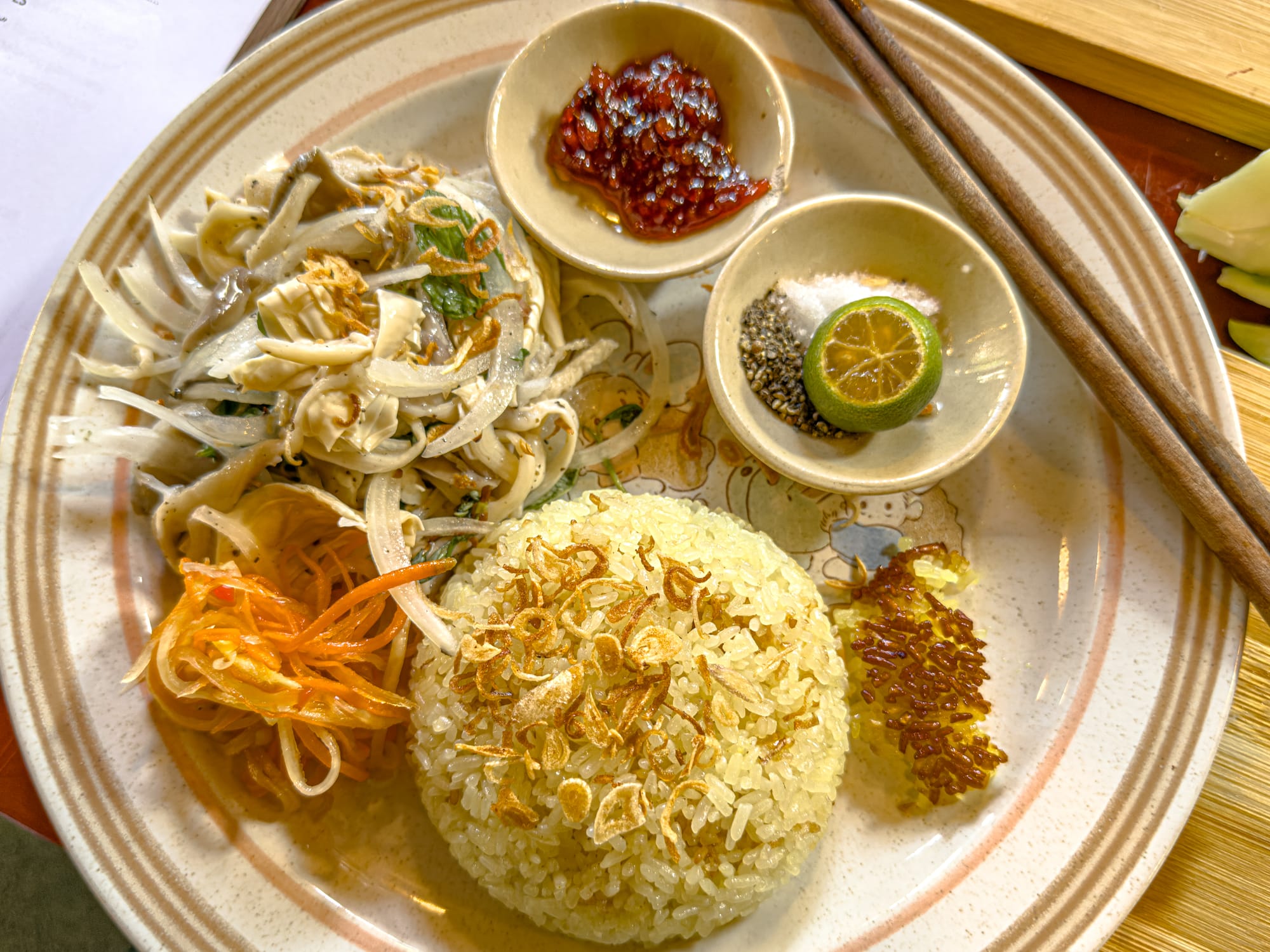
Vegan chicken rice served with pickled vegetables and bright Hội An flavors
Although by the end of the course we were way too full to finish our phở, the depth of the broth was astounding.
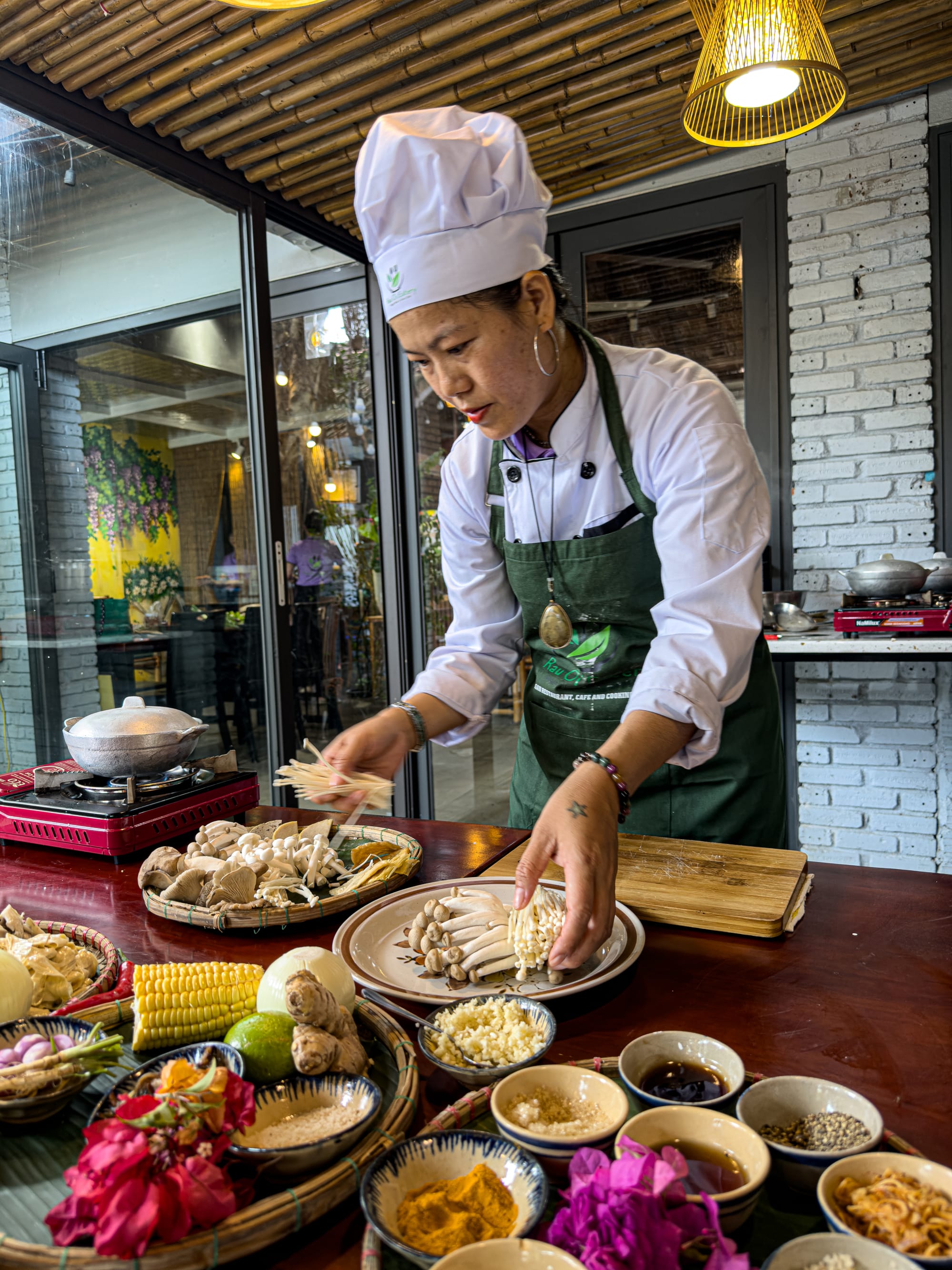
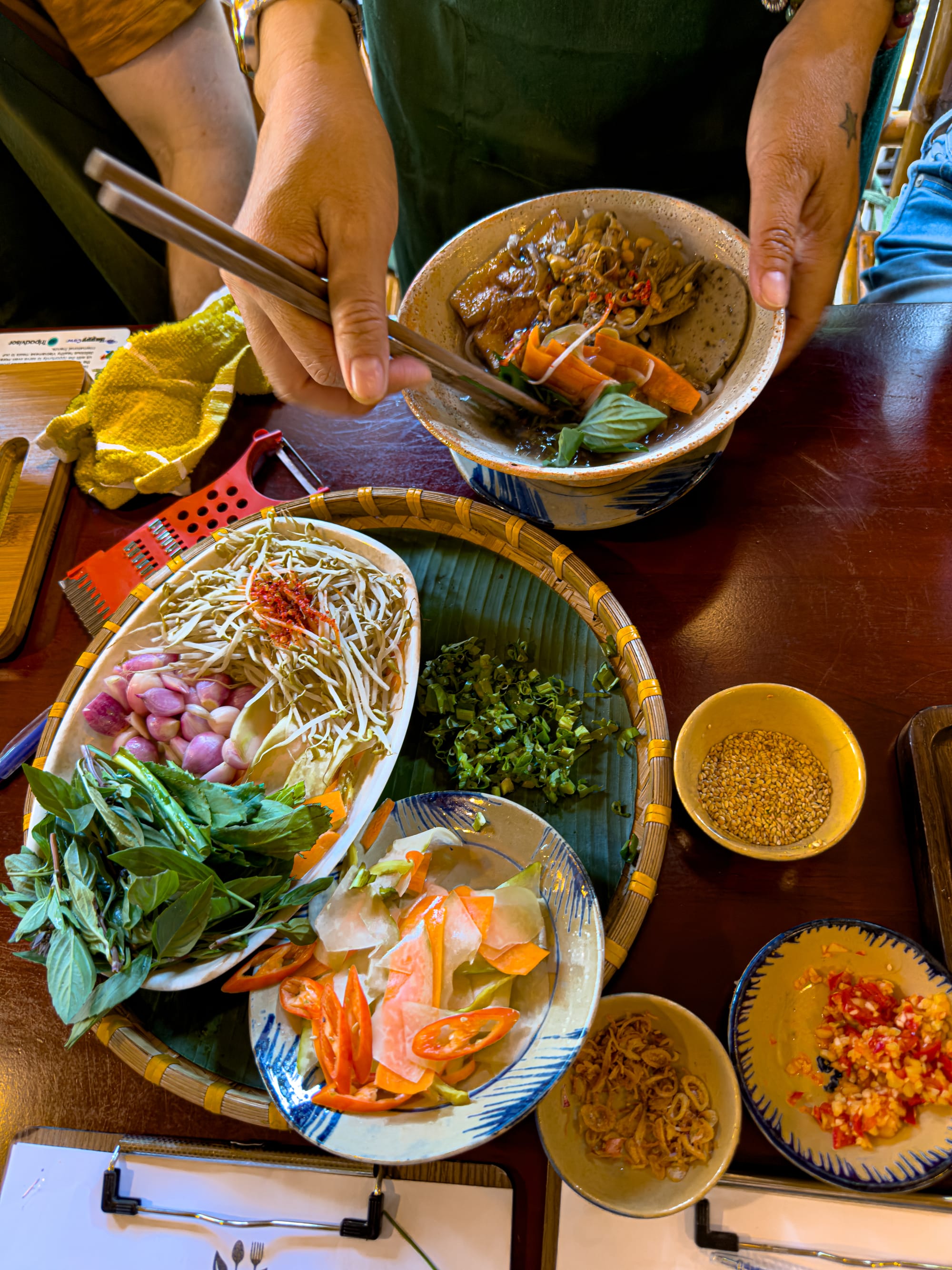
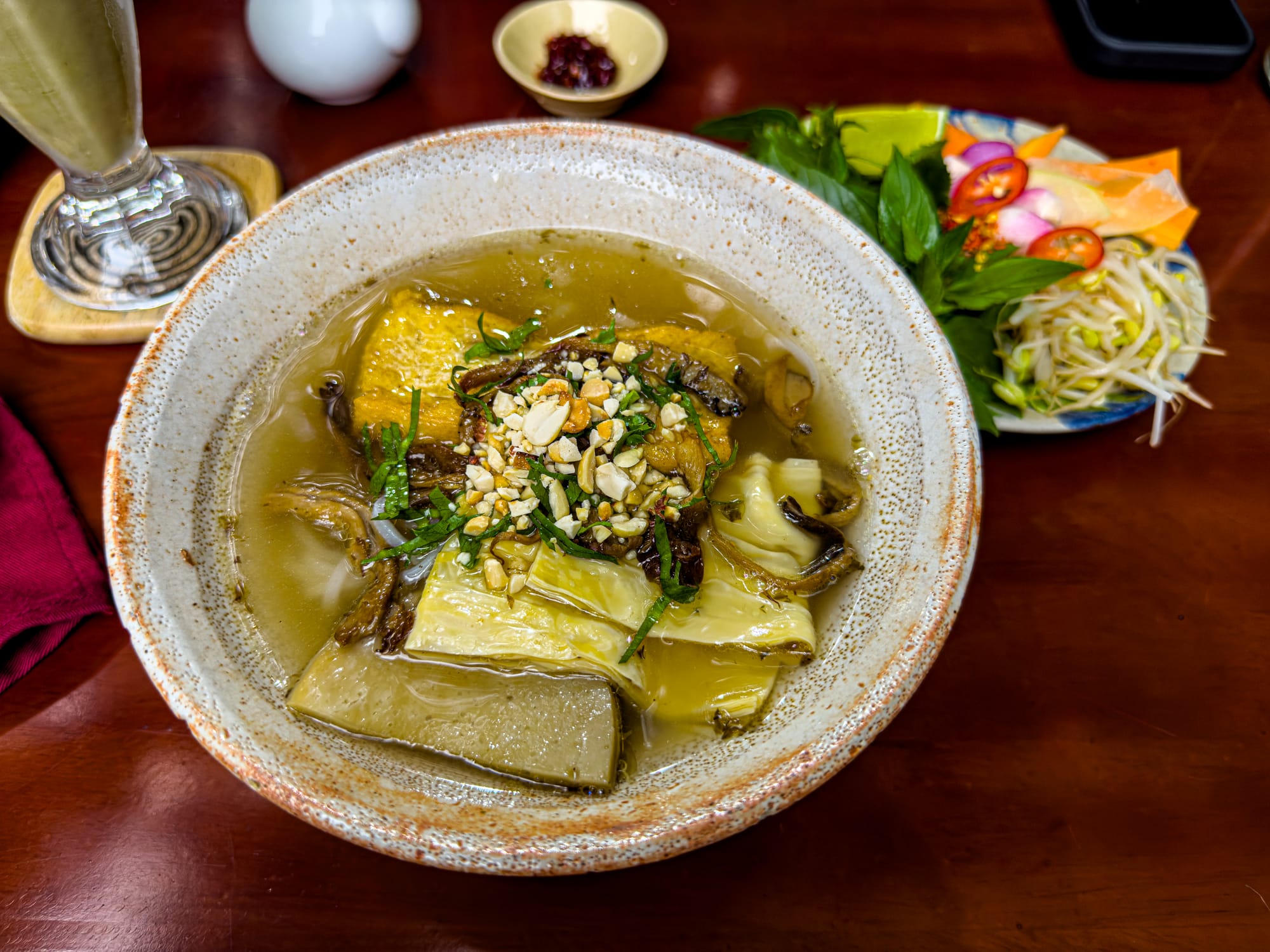
Making a rich, savory broth like this is something we can see ourselves taking from this class and making in places we travel to drink out of a teacup.
Principles of Vietnamese cuisine
Chef Vang taught us about several principles of Vietnamese cuisine. We learned that dishes typically consist of a blend of five types of flavors: sweet, salty, bitter, sour, and spicy. This is especially evident in many of the dipping sauces that are made.
Vietnamese cuisine is rich in herbs, most commonly including lemongrass, ginger, mint, Vietnamese mint, coriander, cinnamon, Thai basil, and lime. It naturally does not contain much dairy, which makes veganizing notable dishes much easier.
Texture is very important in Vietnamese cuisine, with many dishes showcasing a harmony between opposite textures: crispy and soft, watery and crunchy, and delicate and rough.
One popular dish from the Quảng Nam province, where Hội An is situated, is cao lầu, a Vietnamese noodle dish. Chickpea Eatery has an excellent vegan version, although we have not tried Rau Ơi's. We learned that the noodles get their chewiness from the flour being mixed with ash from certain local trees. Legend has it that the water used to boil the noodles should always be taken from the ancient Bá Lễ well in Hội An, which is one reason why the dish isn't widely found on menus outside the region.
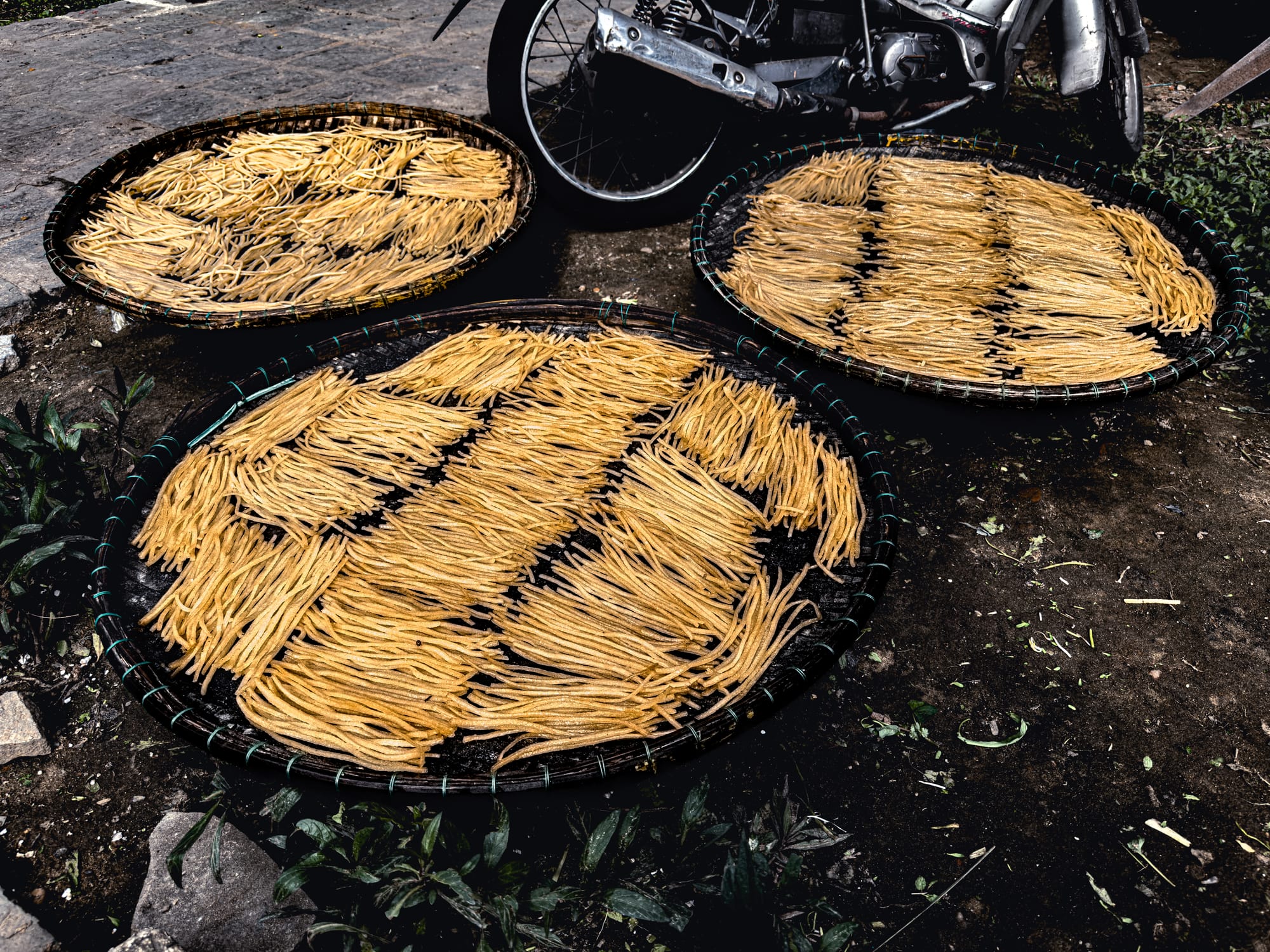
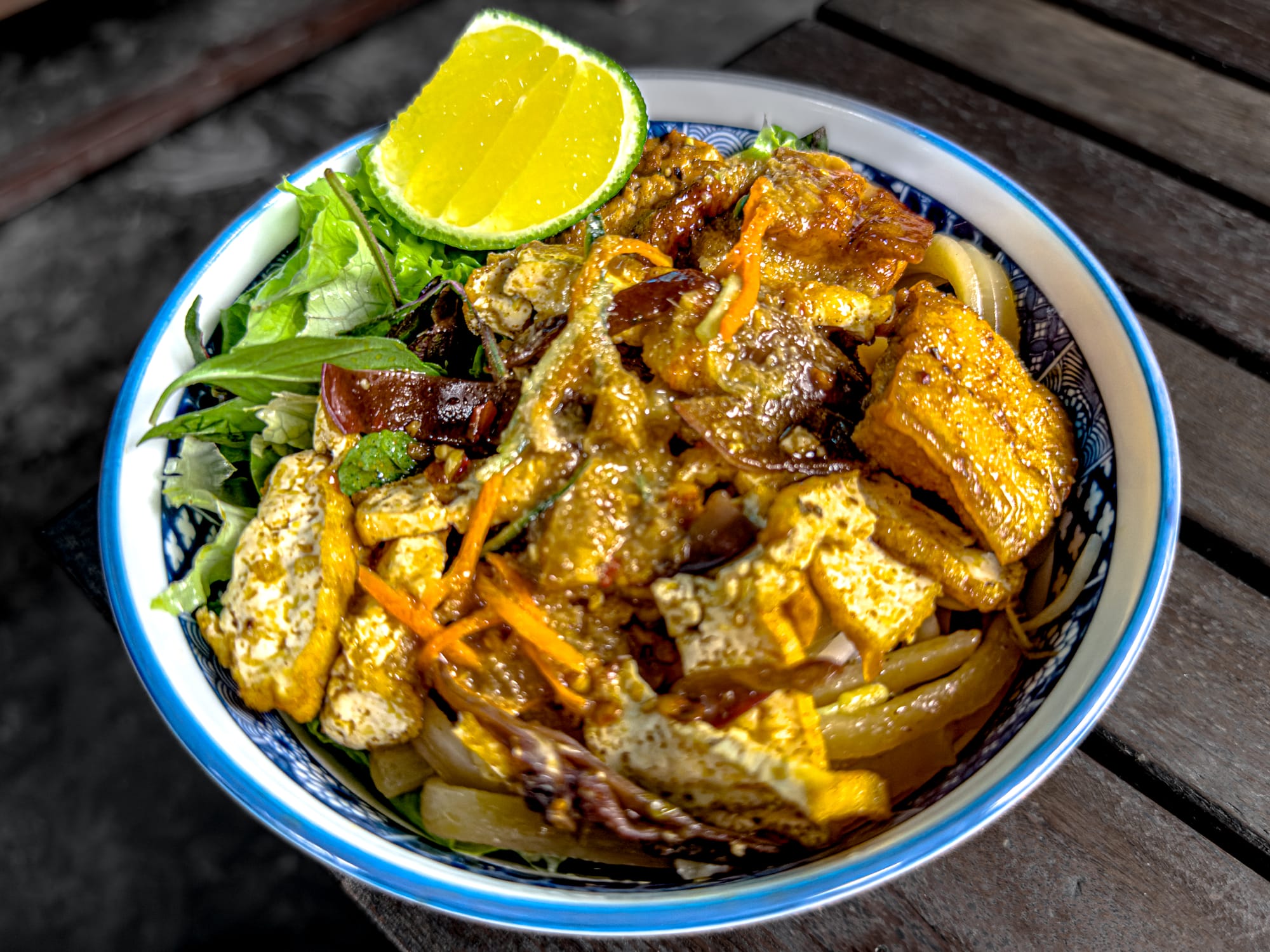
Cao lầu noodles drying outside and Chickpea Eatery’s cao lầu
Mì Quảng is another popular regional dish, a rice noodle soup with a turmeric-infused broth garnished with peanuts, toasted sesame rice crackers, and a handful of herbs.
Chef Vang also discussed the influence of French cuisine, which is most evident in bánh mì, Vietnam's crispy baguette filled with savory proteins and pickled cucumber, carrot, and daikon.
Lastly, she highlighted the importance of the visual presentation of a dish and how attention is often paid to making it look as aesthetically pleasing as possible. This can be done through the addition of carved vegetables, flowers, and toppings.
Nutty Gardens
Nutty Gardens is Rau Ơi's backyard permaculture farm, where many of the greens used in the restaurant's dishes are grown. The farm manager kindly offered a tour and explanation of its practices to those interested.
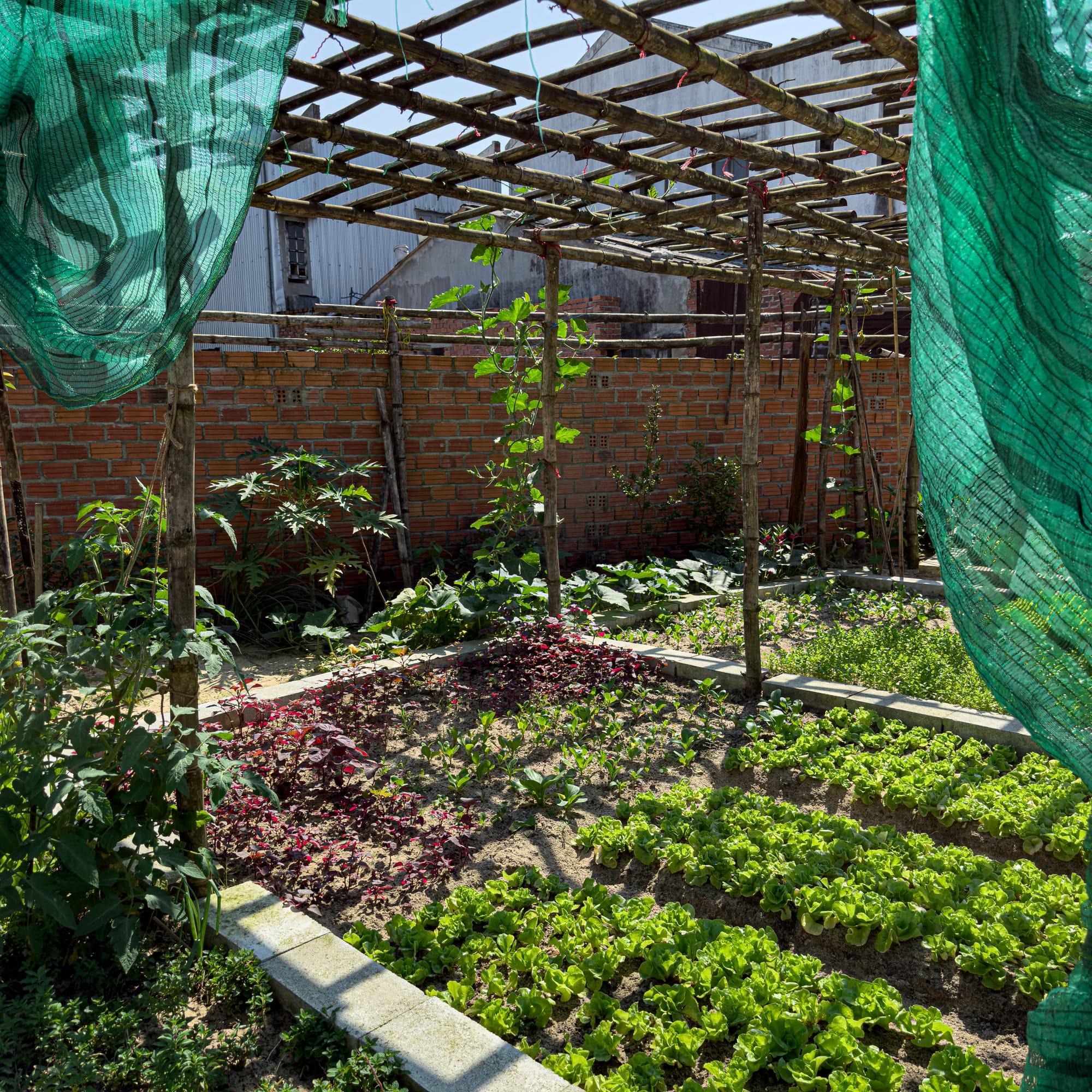
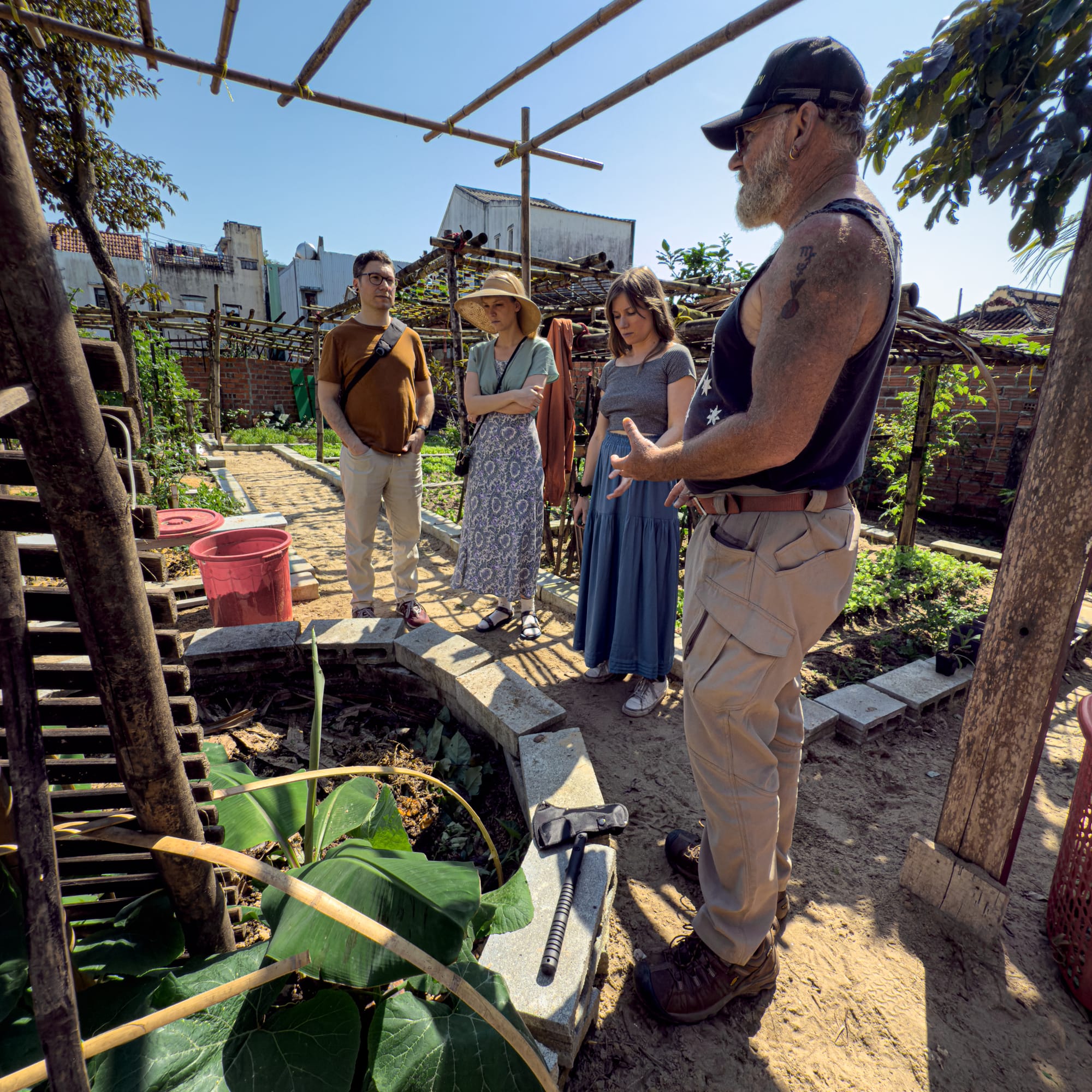
A tour of Nutty Gardens, where Rau Ơi Eatery grows many of the vegetables used in their dishes
Although it wasn't part of the official class, it was a great experience. If you have the time, we recommend asking to take a walk around.
Book the class, or just visit the restaurant
We loved Rau Ơi's class. By the end of the day, we felt we had so many experiences packed in—from the vegetable village to the market, to the four dishes we made, to the brief tour of Nutty Garden at the end. If you're looking for a very comprehensive experience, this is it. The food was excellent, and Chef Vang was a great host.
To book a vegan cooking class at Rau Ơi Eatery, contact them through their WhatsApp number, which you can find on their website.
If you'd rather not cook, you can just eat there instead. Check out their menu.
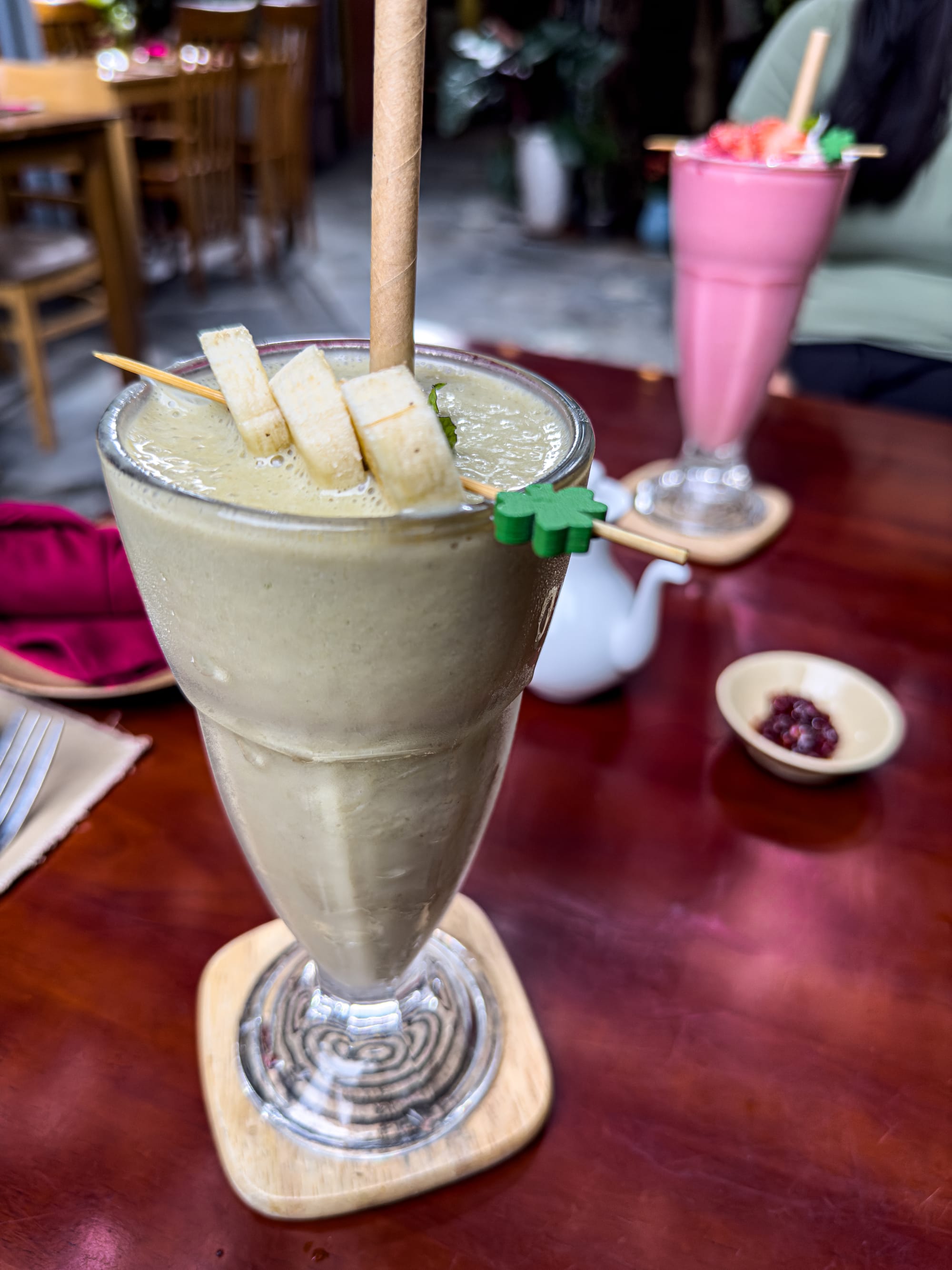
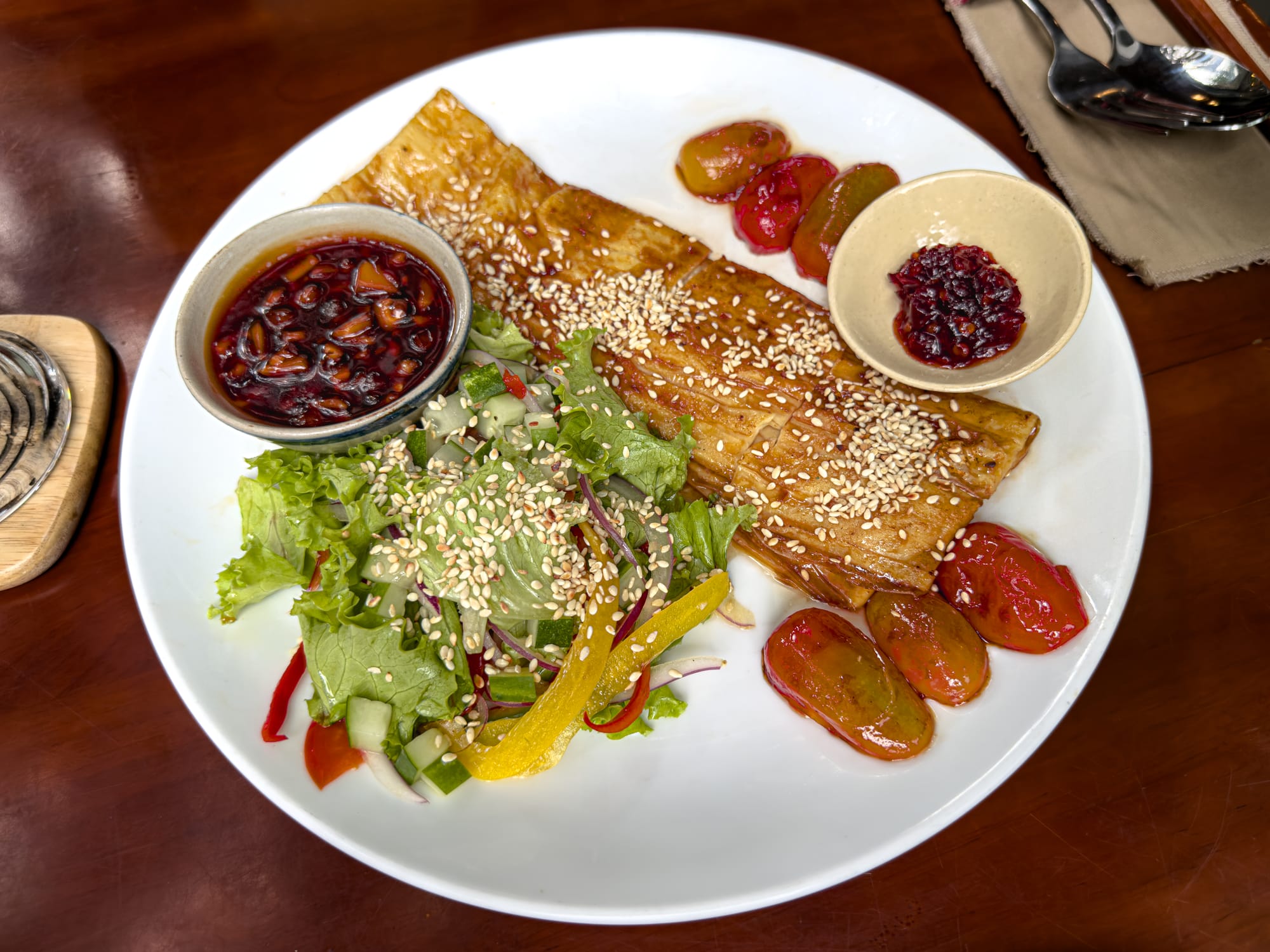
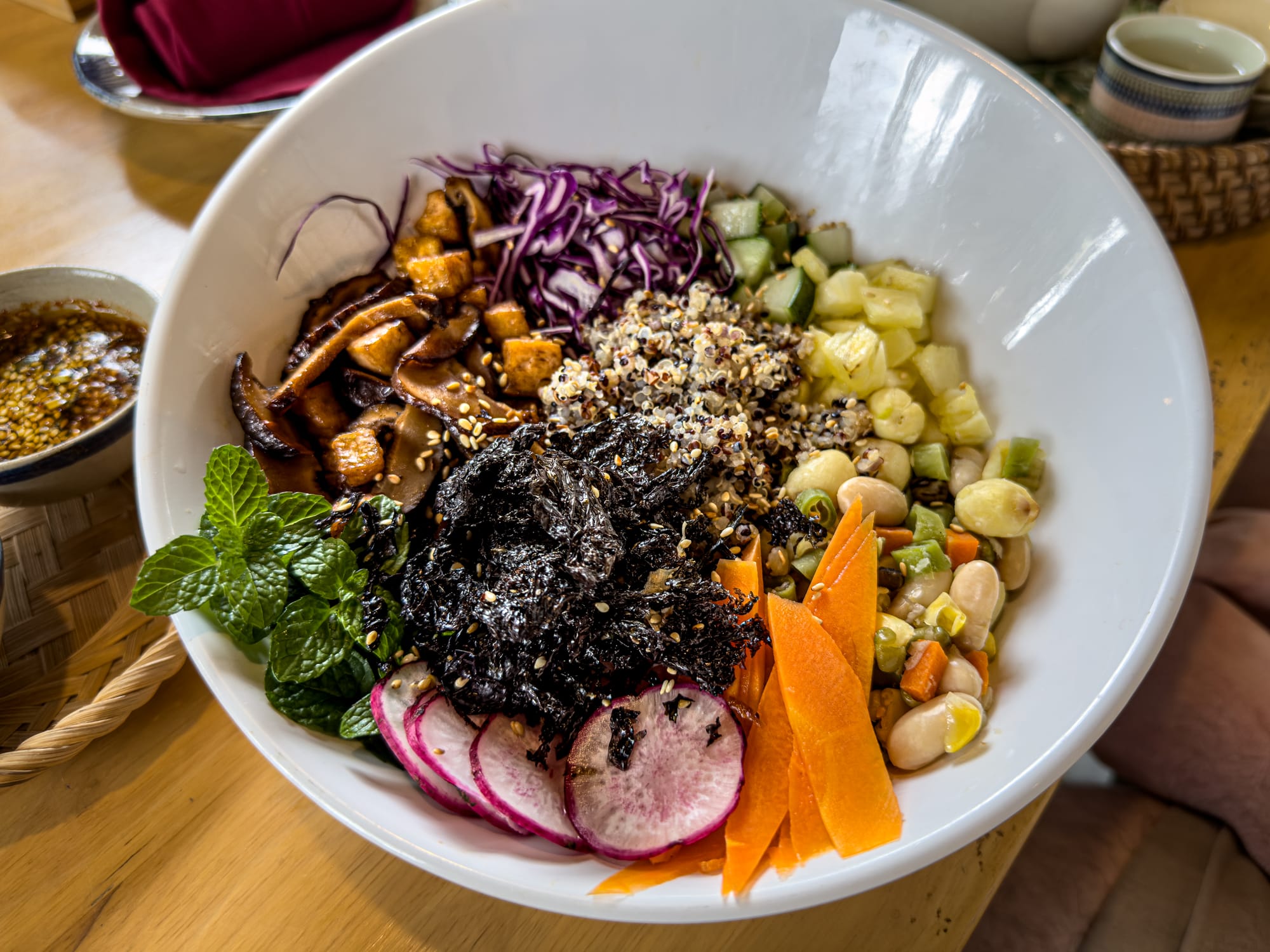
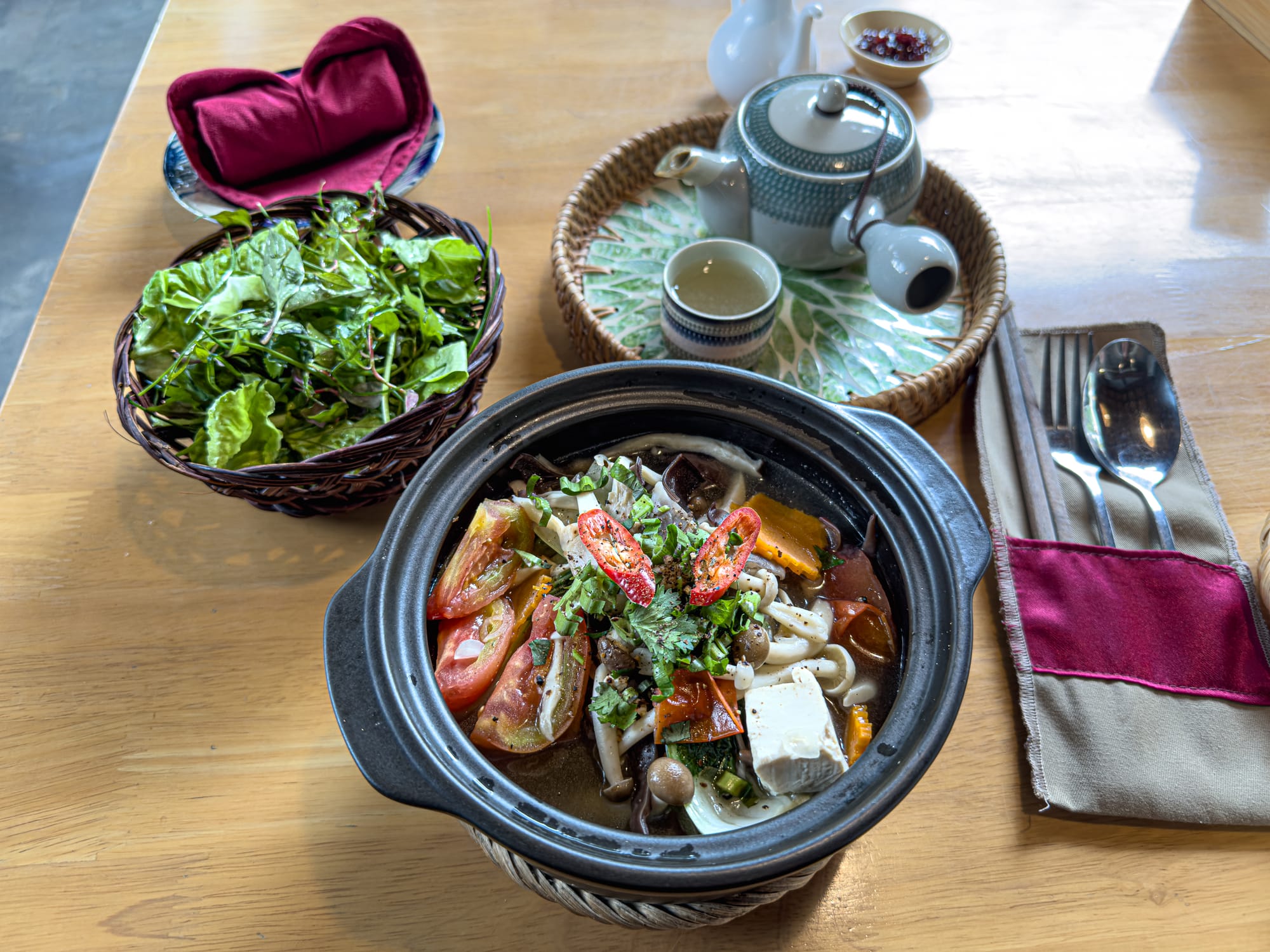
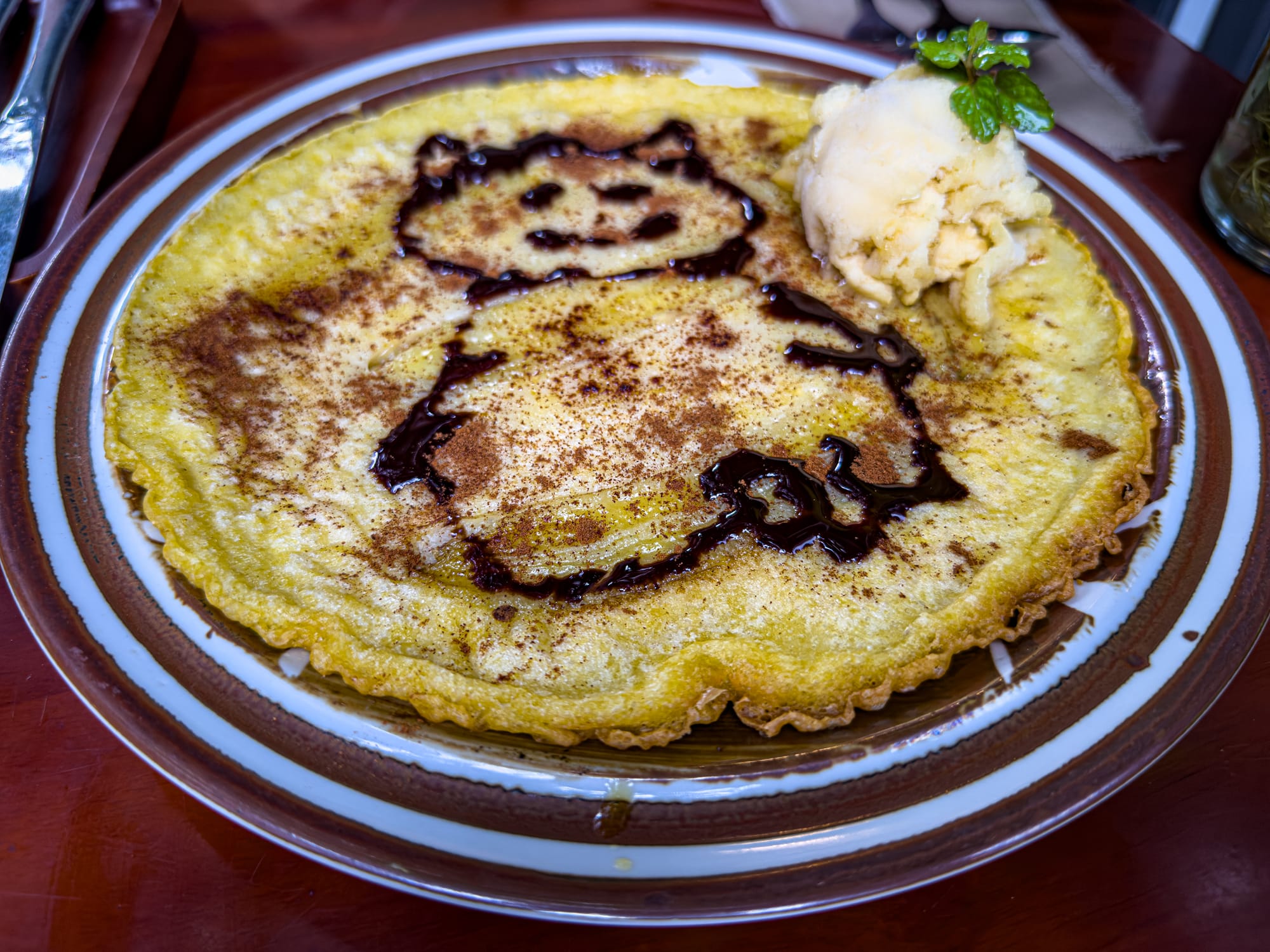
An assortment of vegan dishes from Rau Ơi Eatery
In addition to taking the cooking class, we enjoyed a number of great meals at the restaurant itself.






